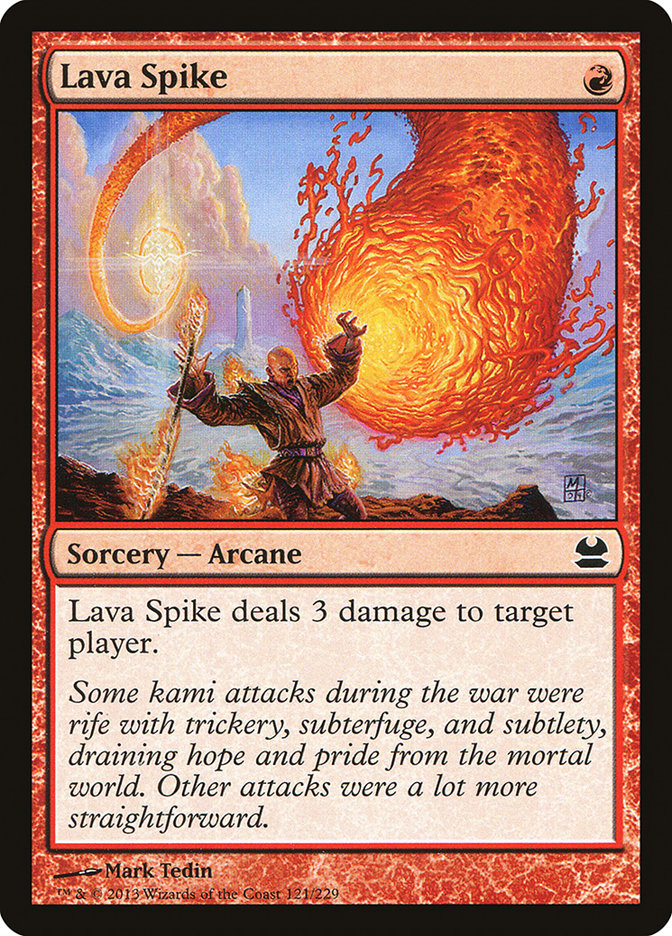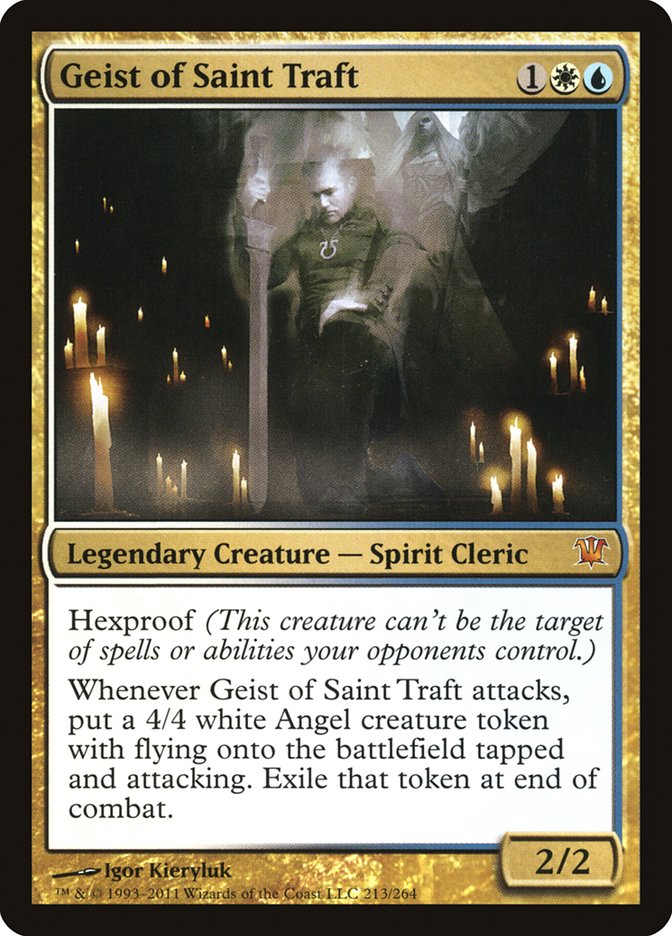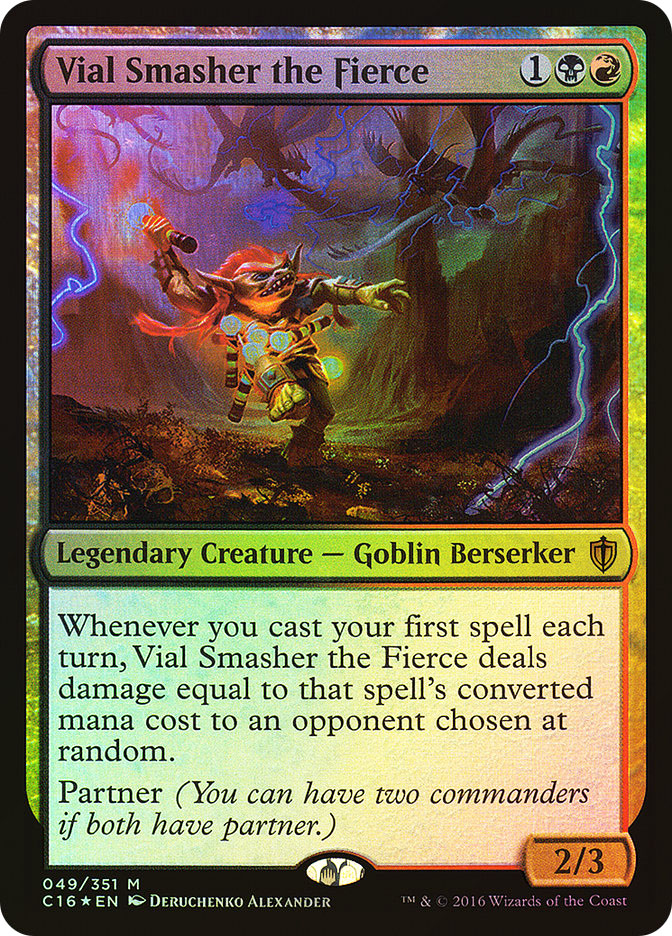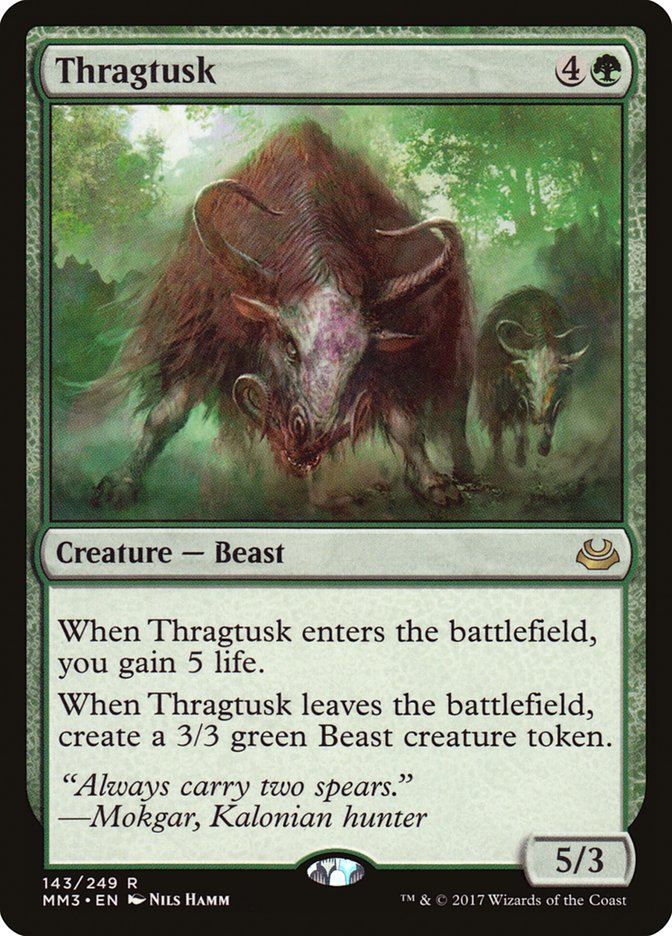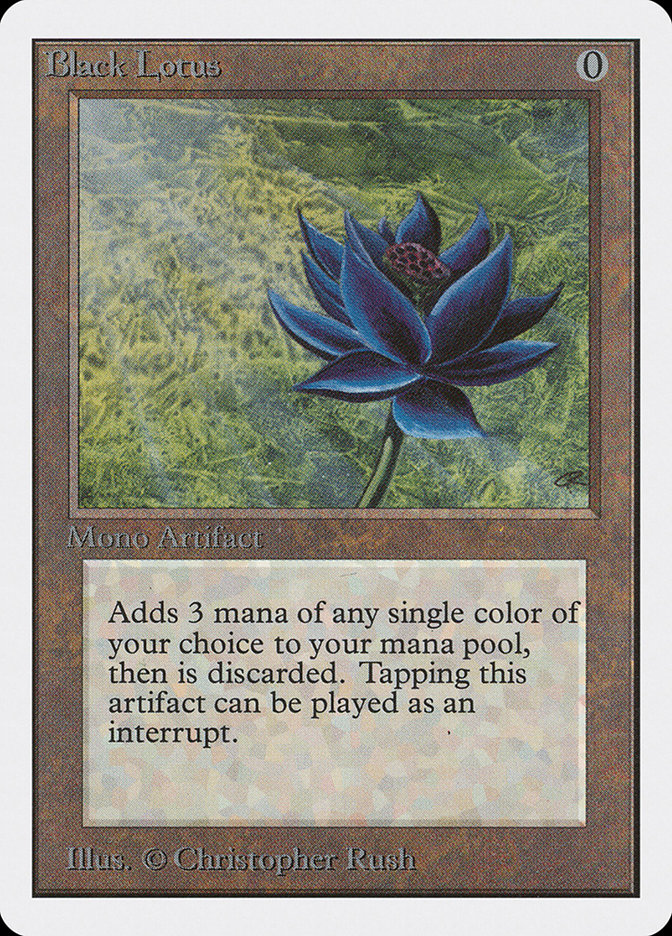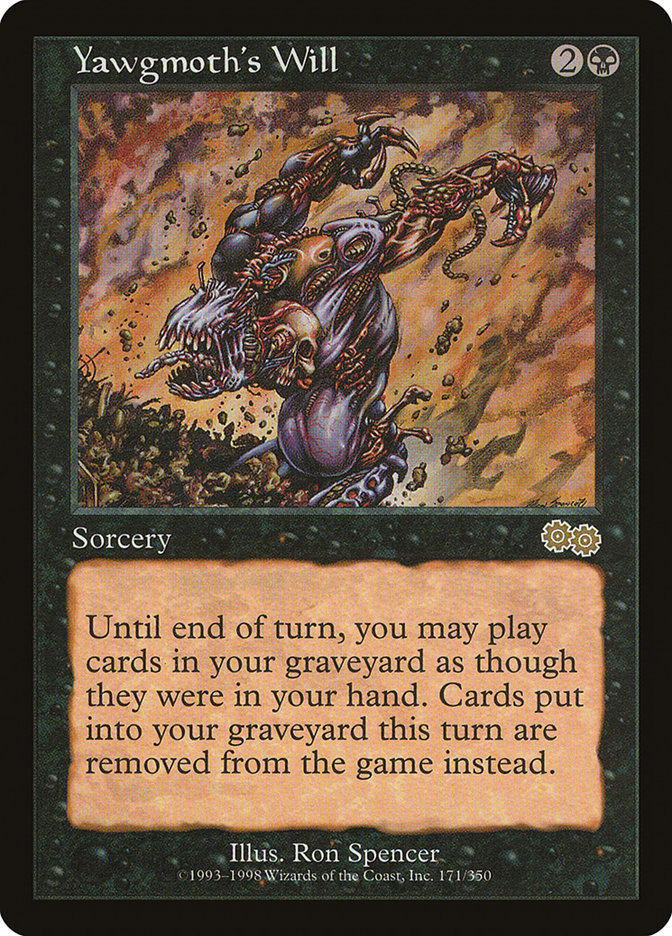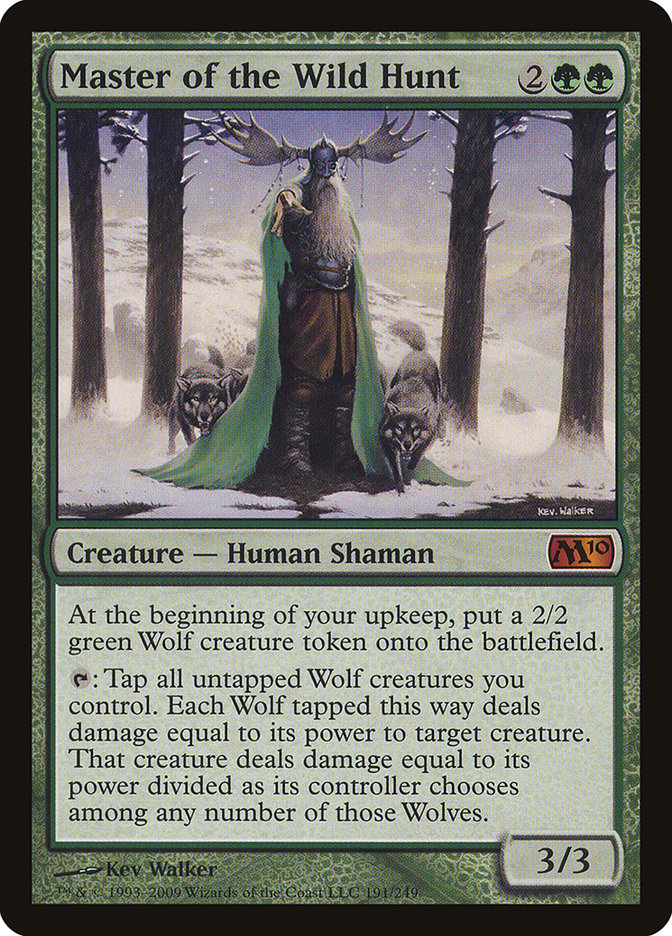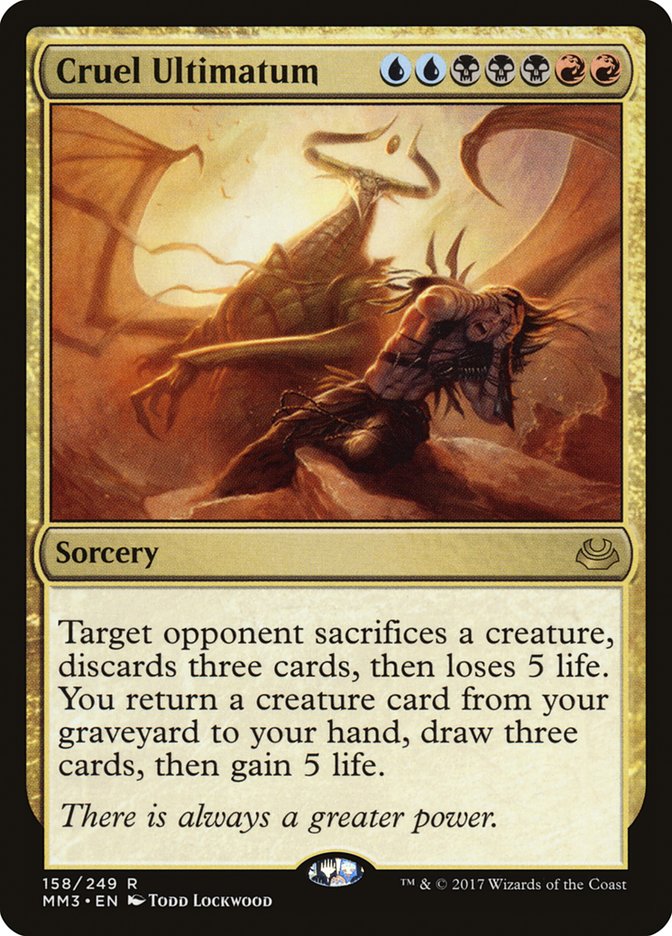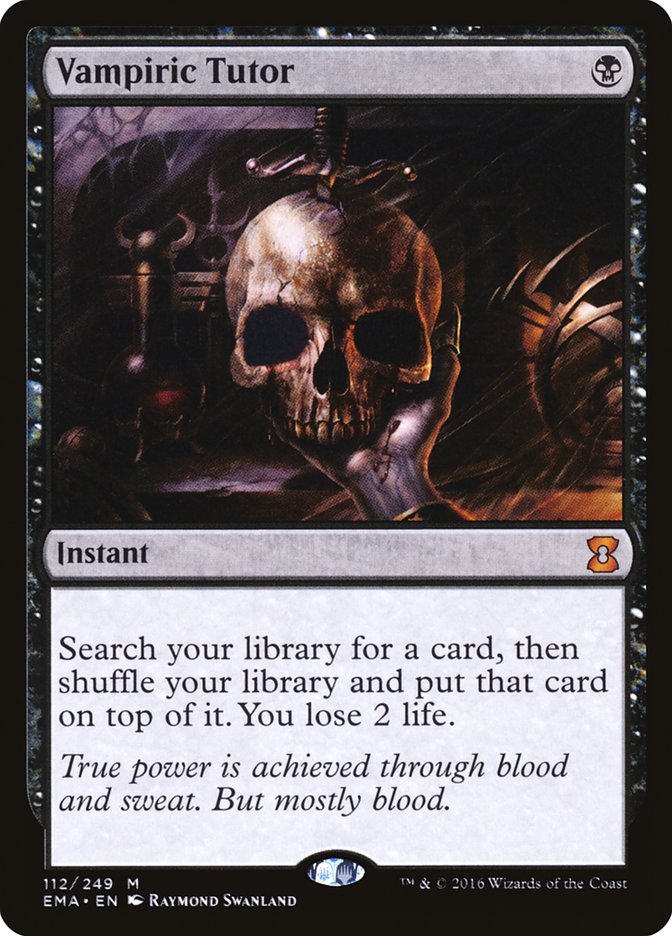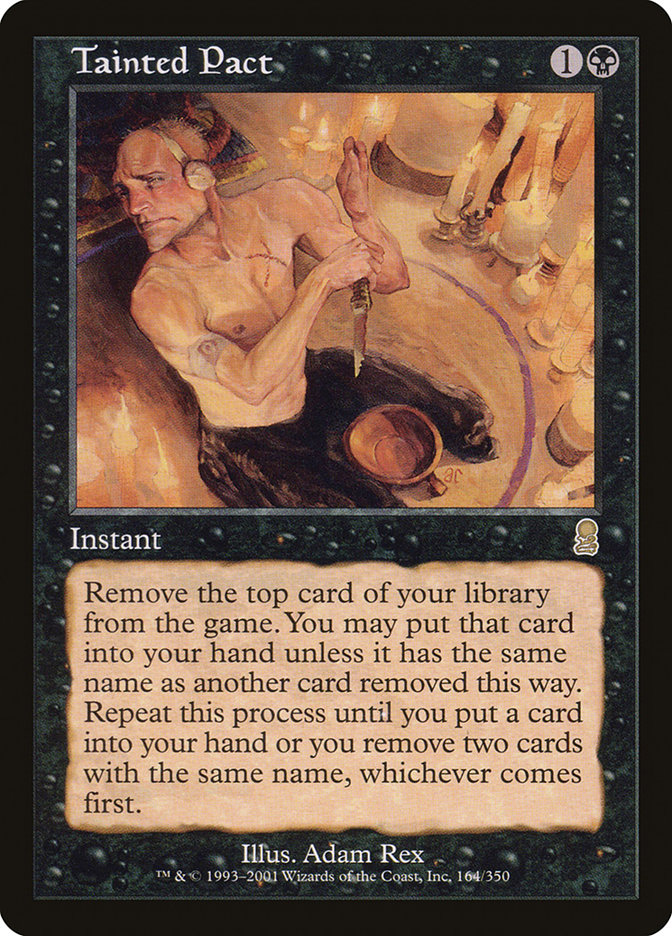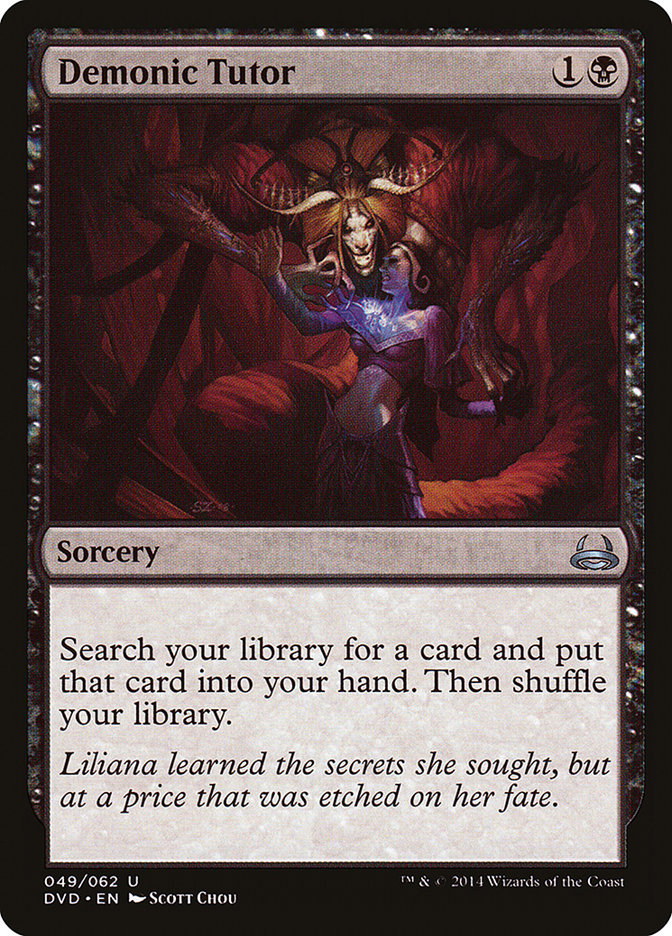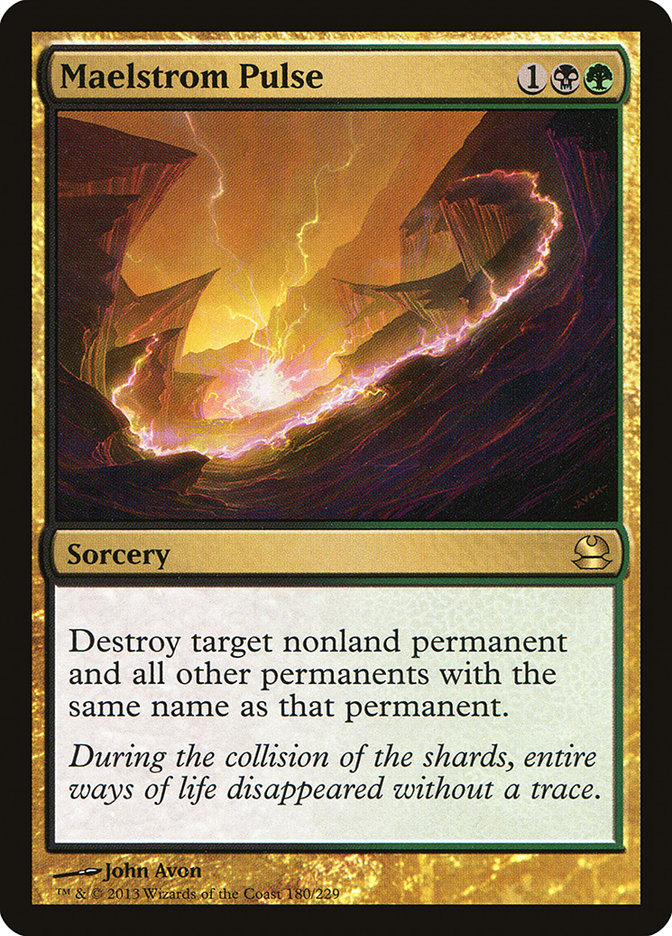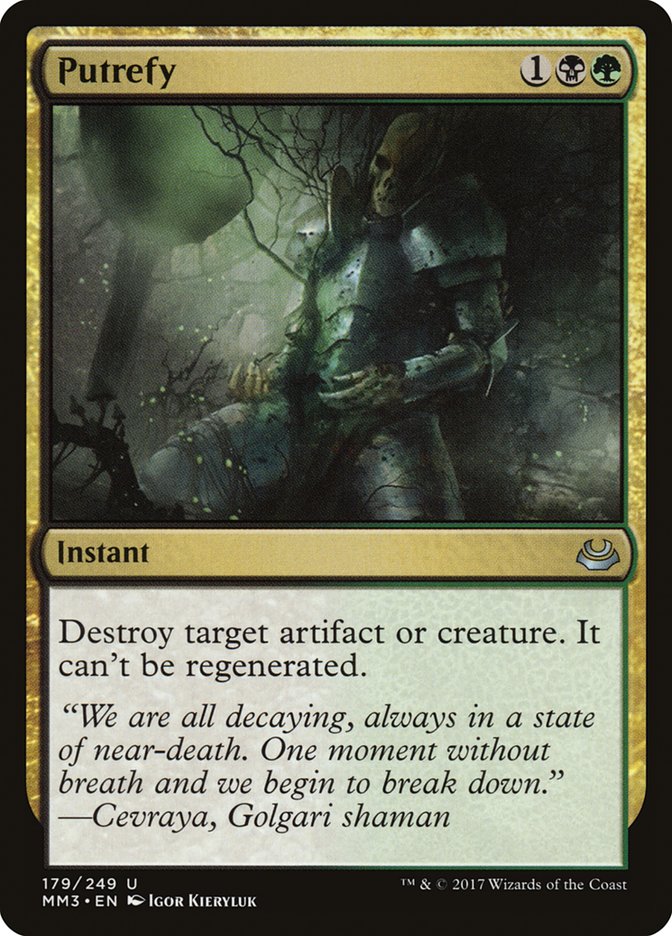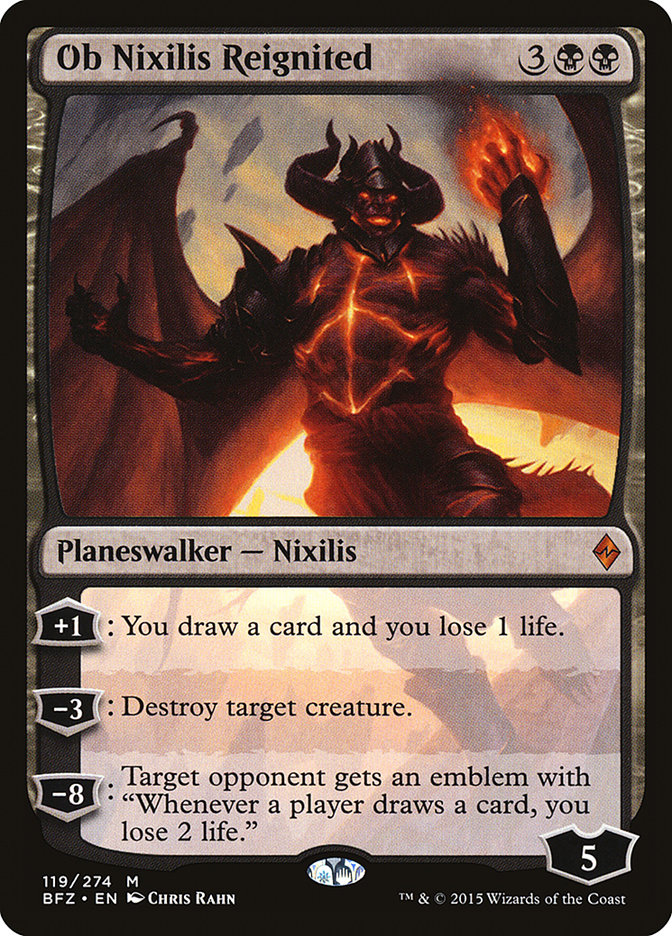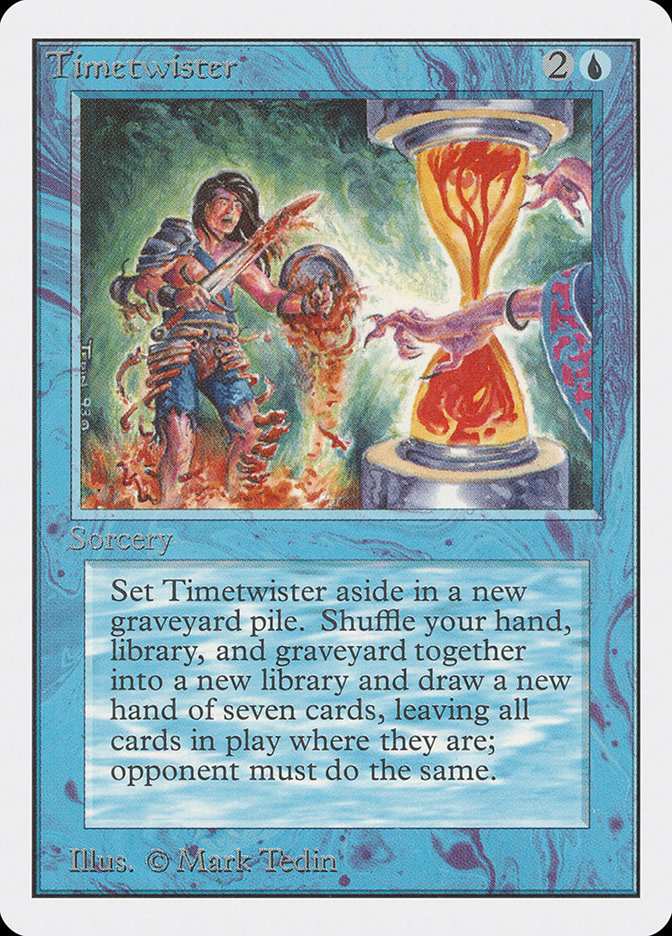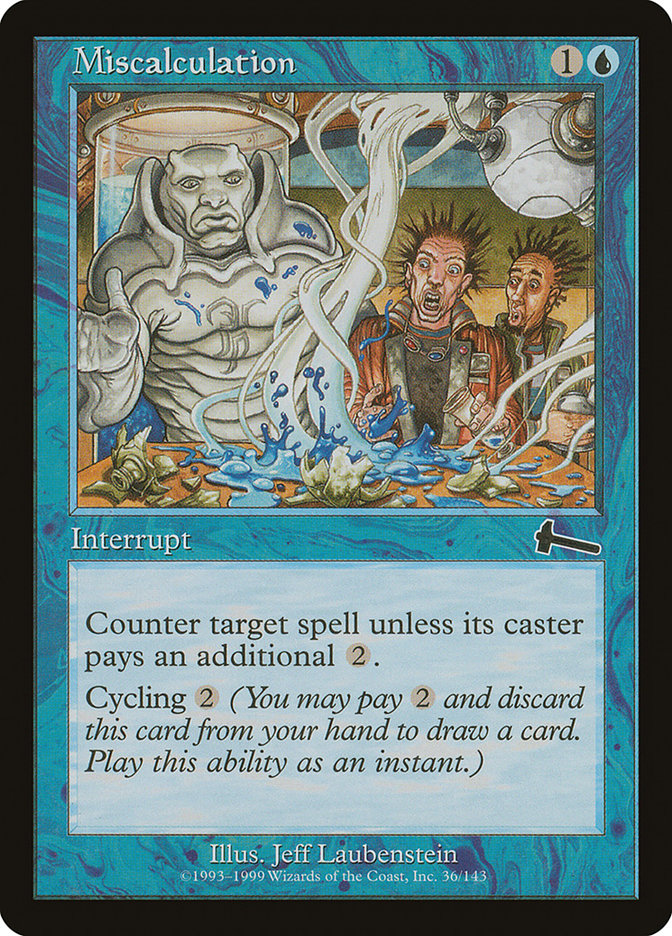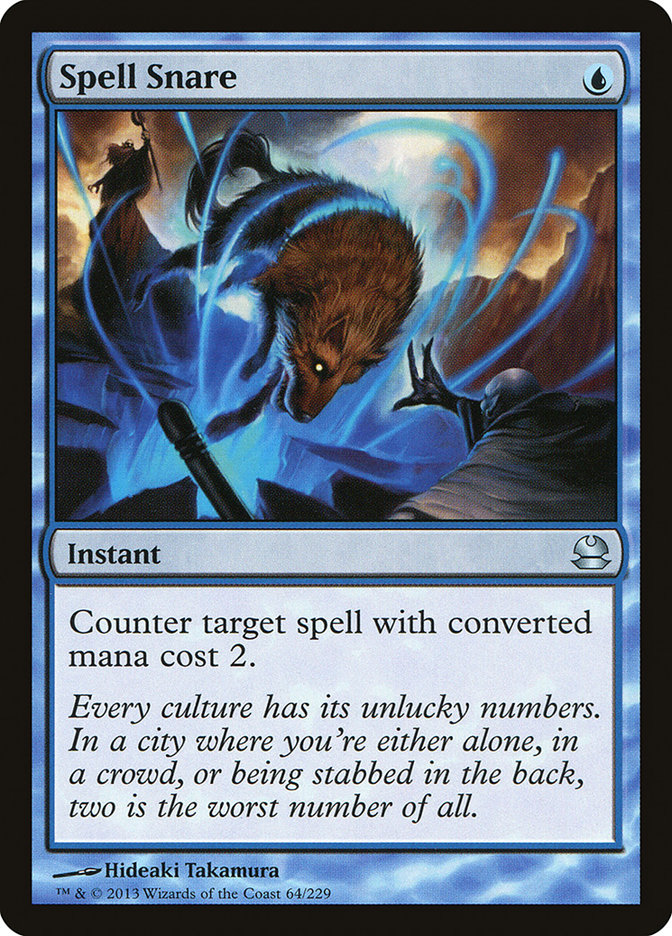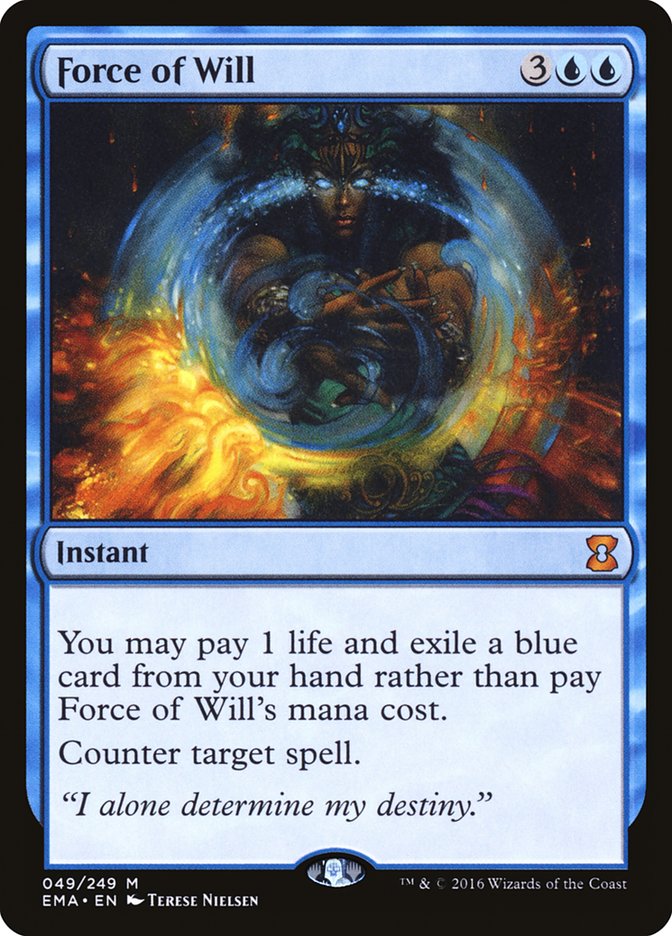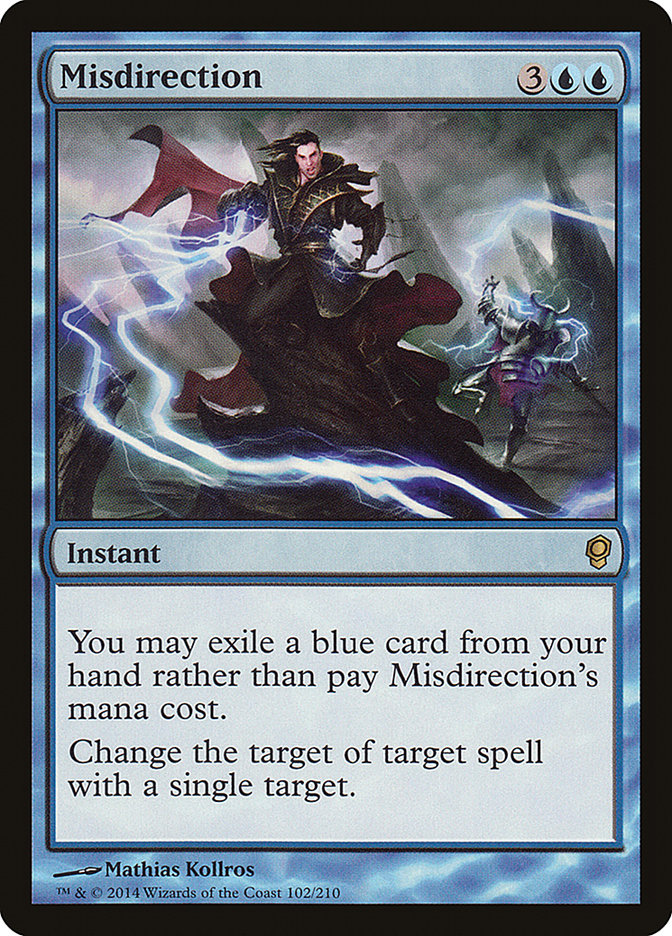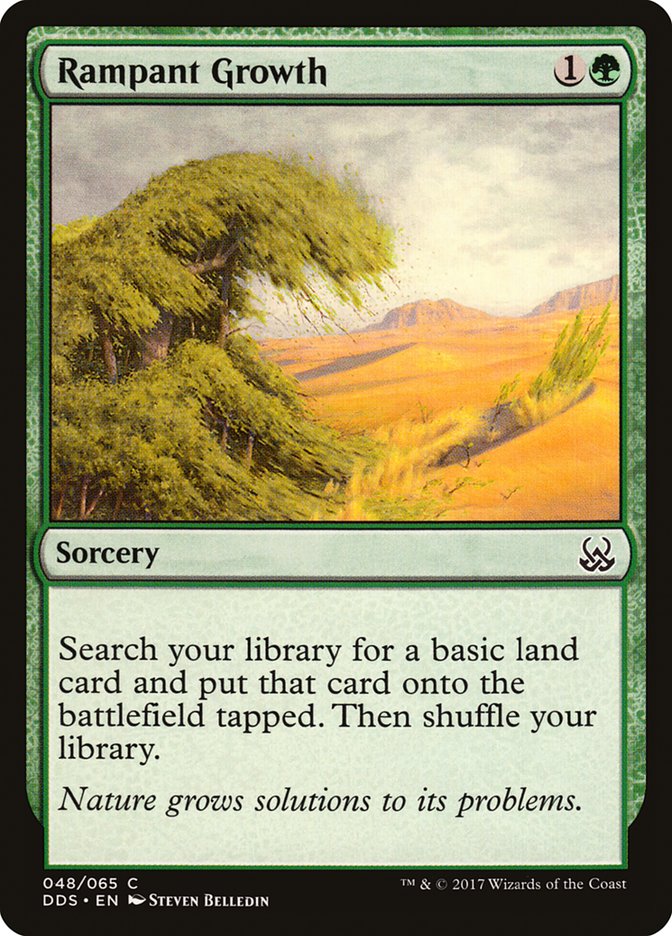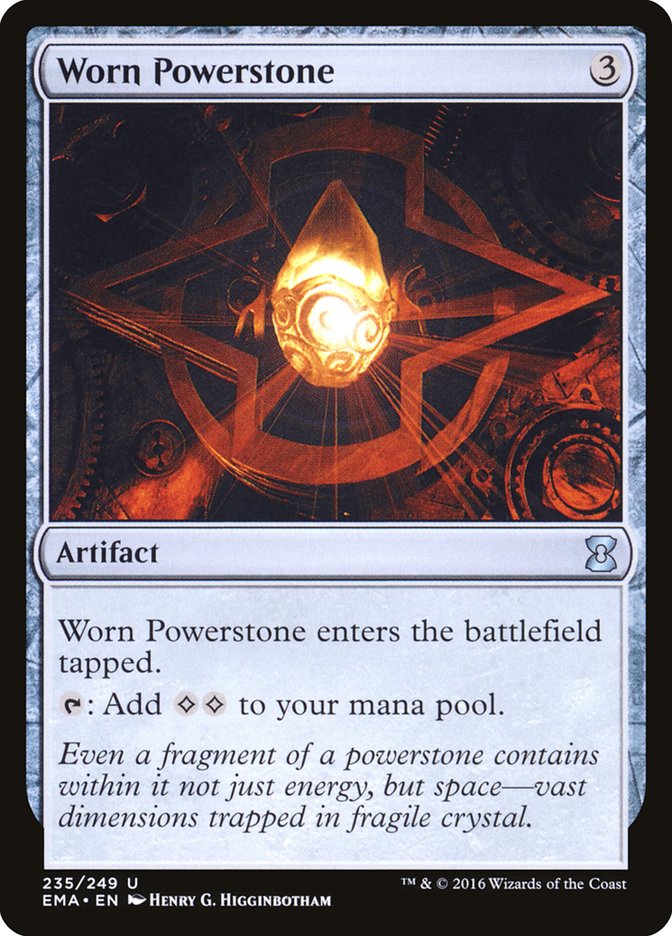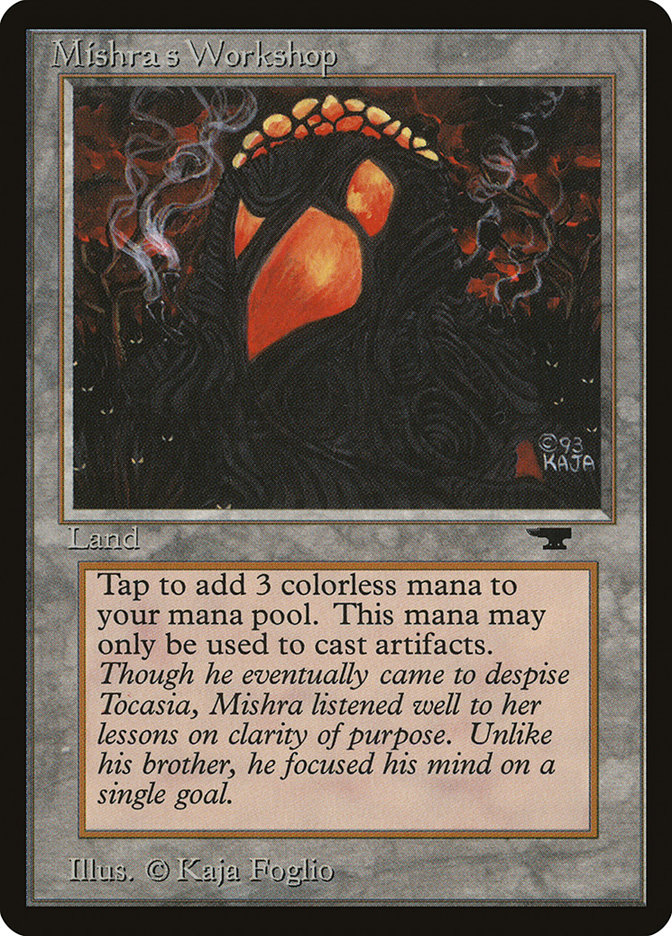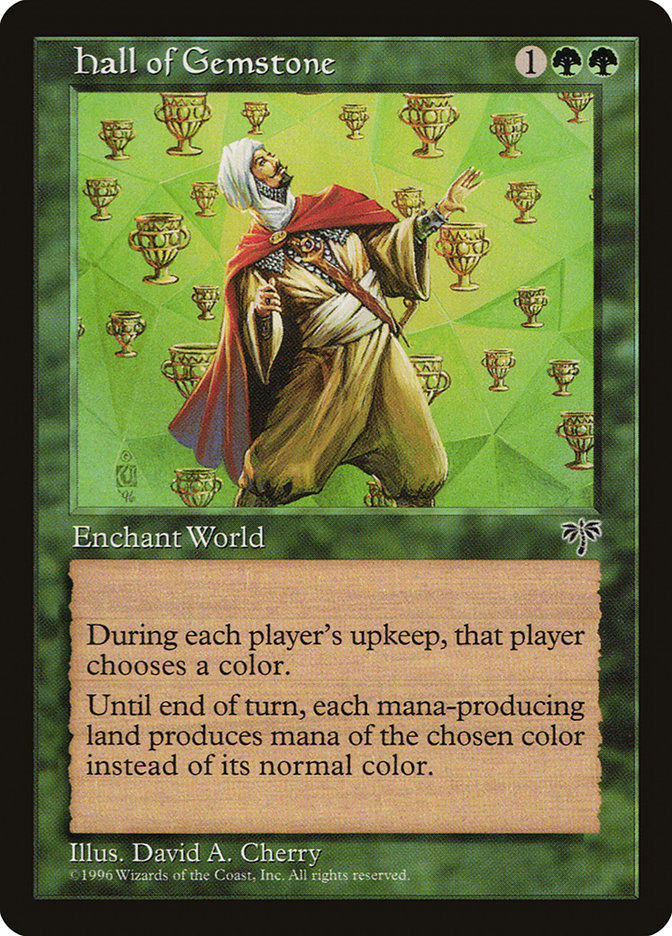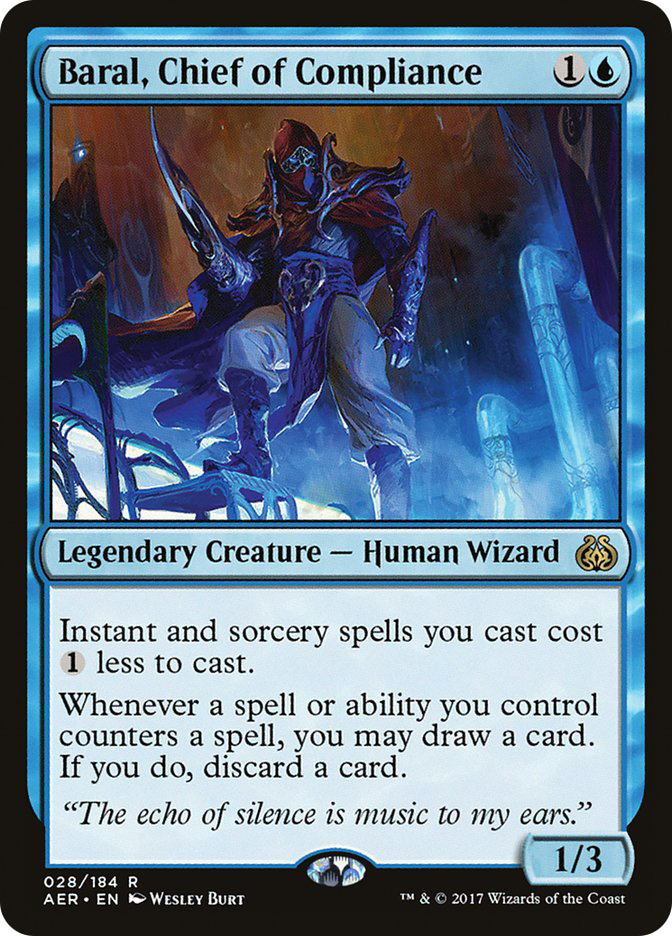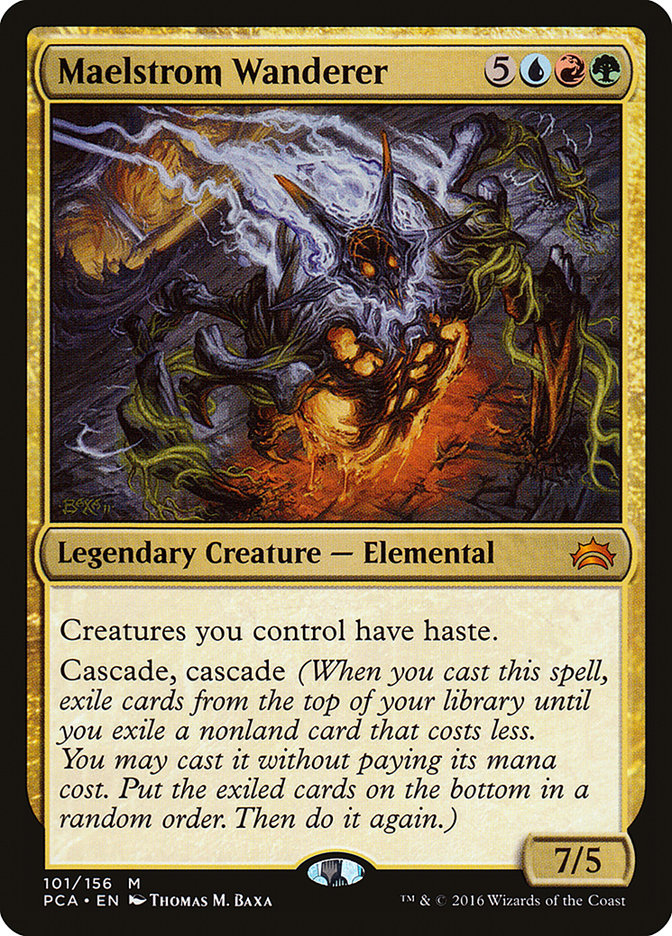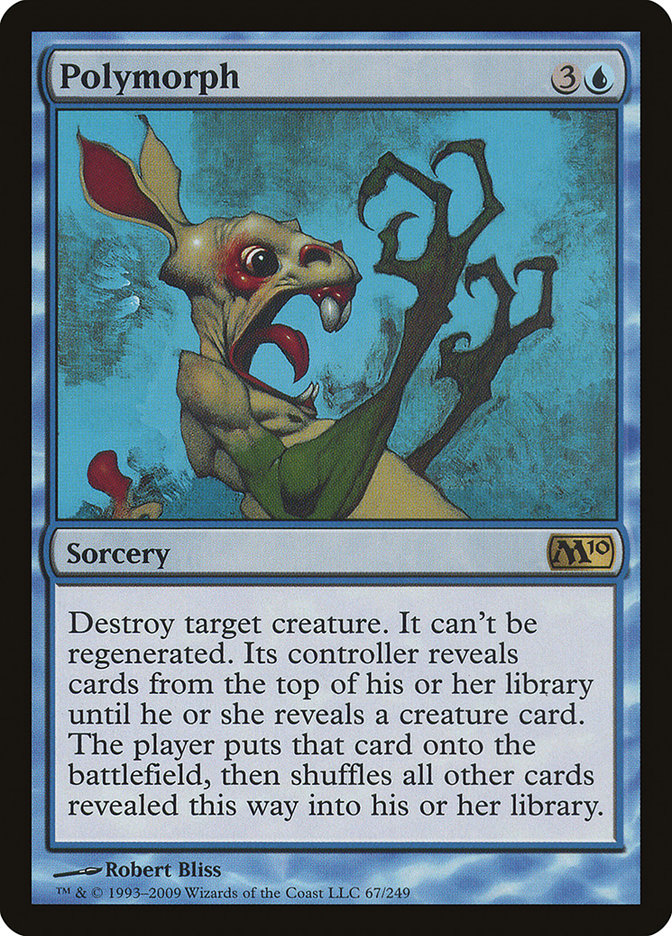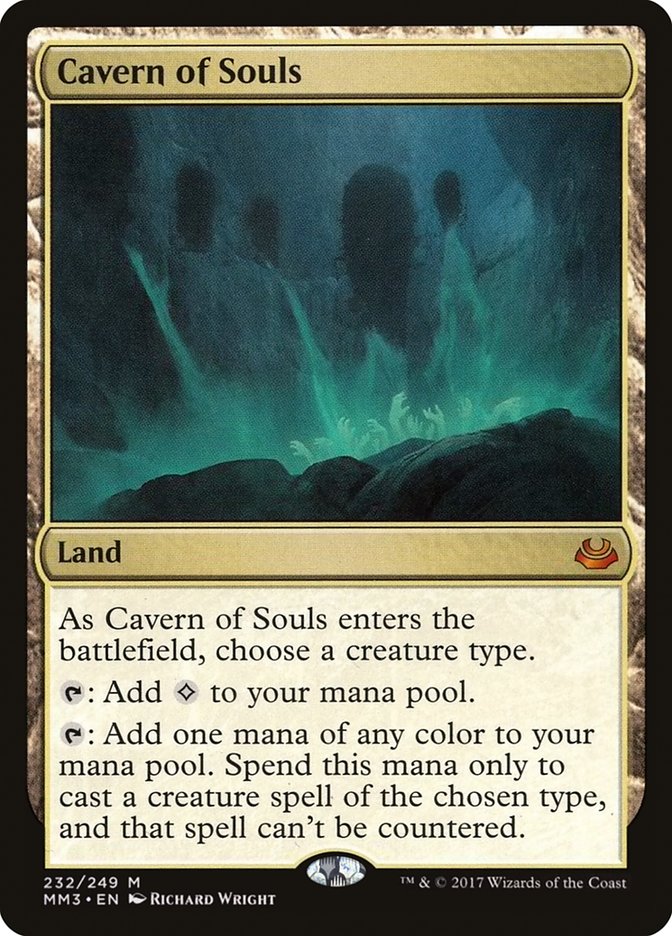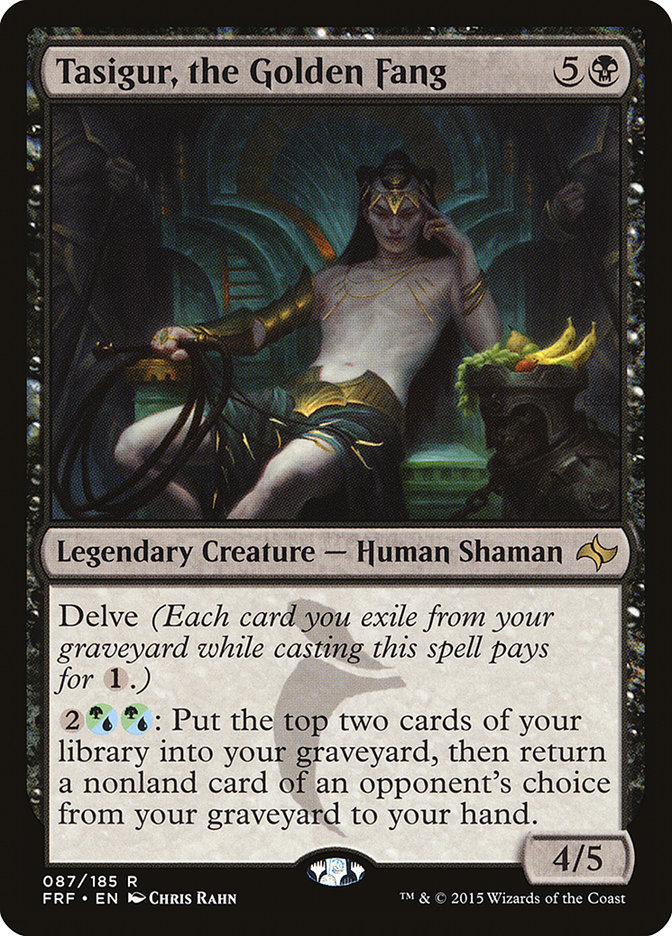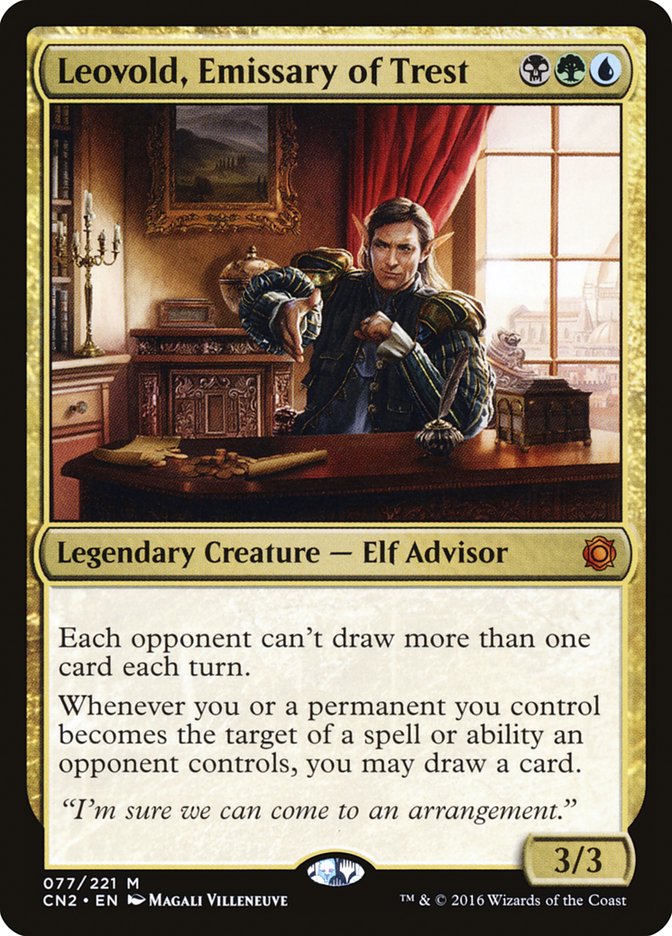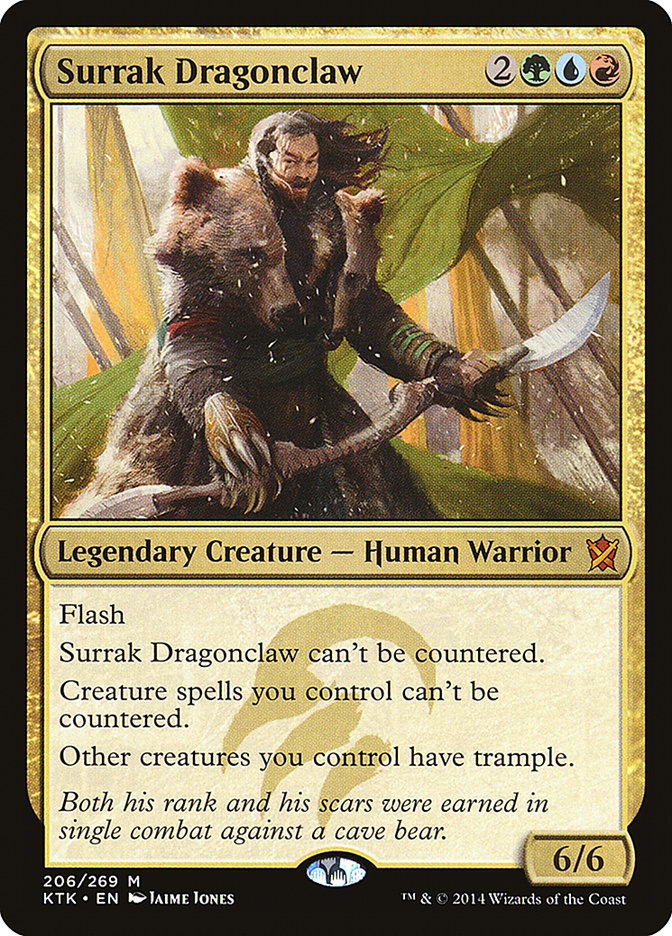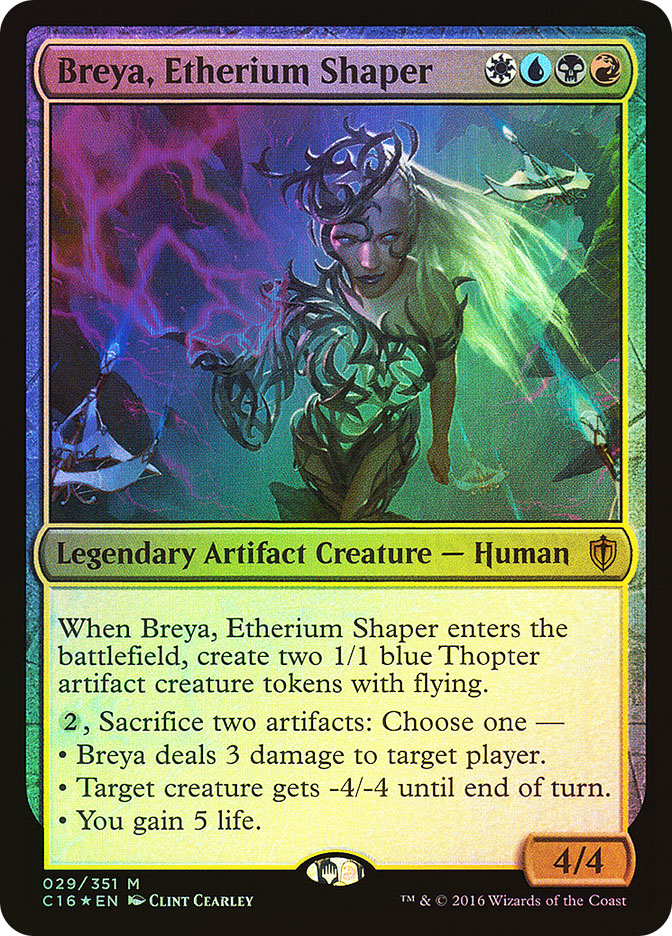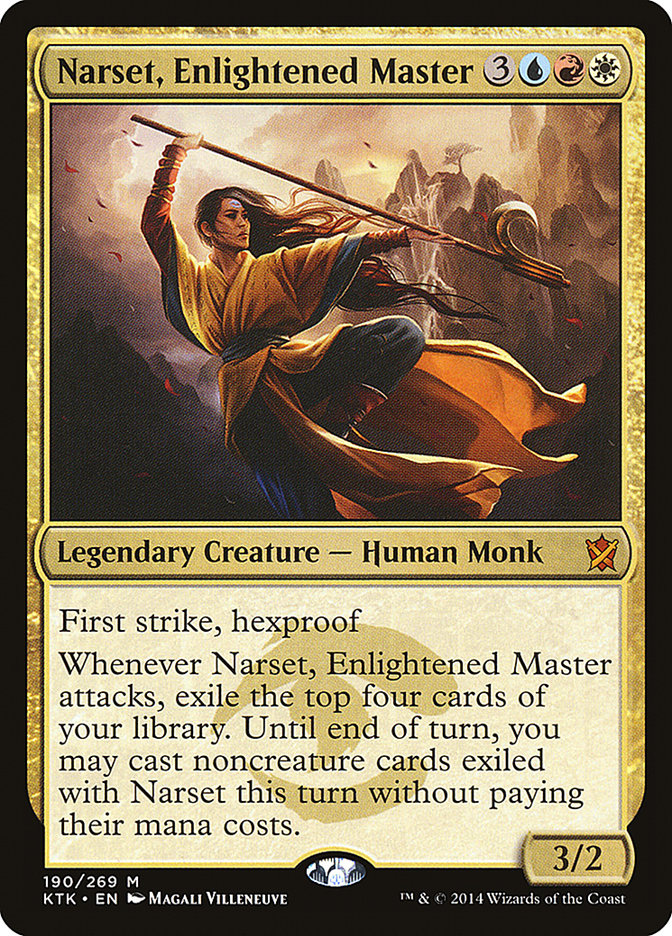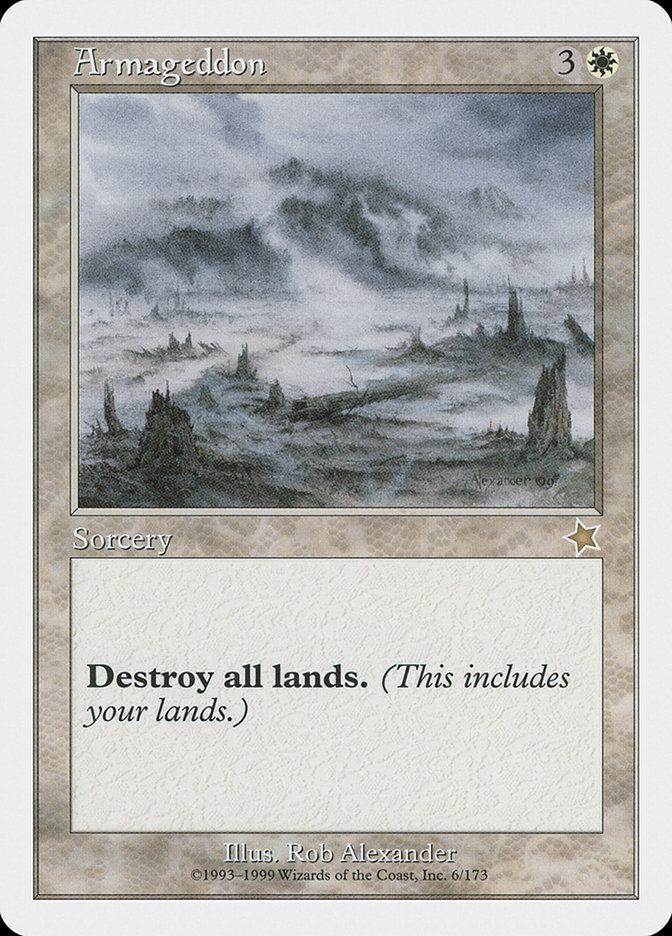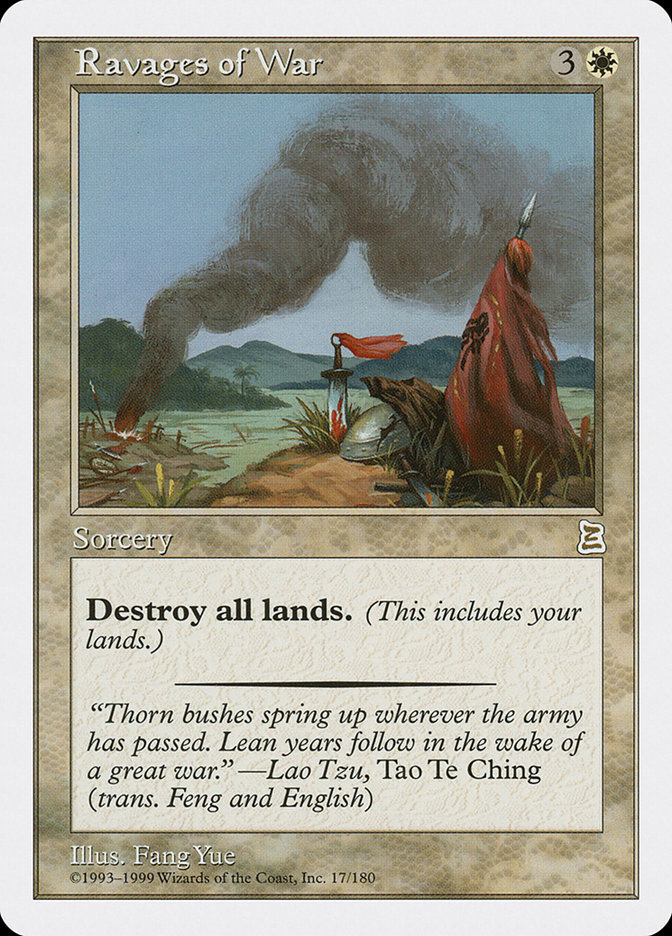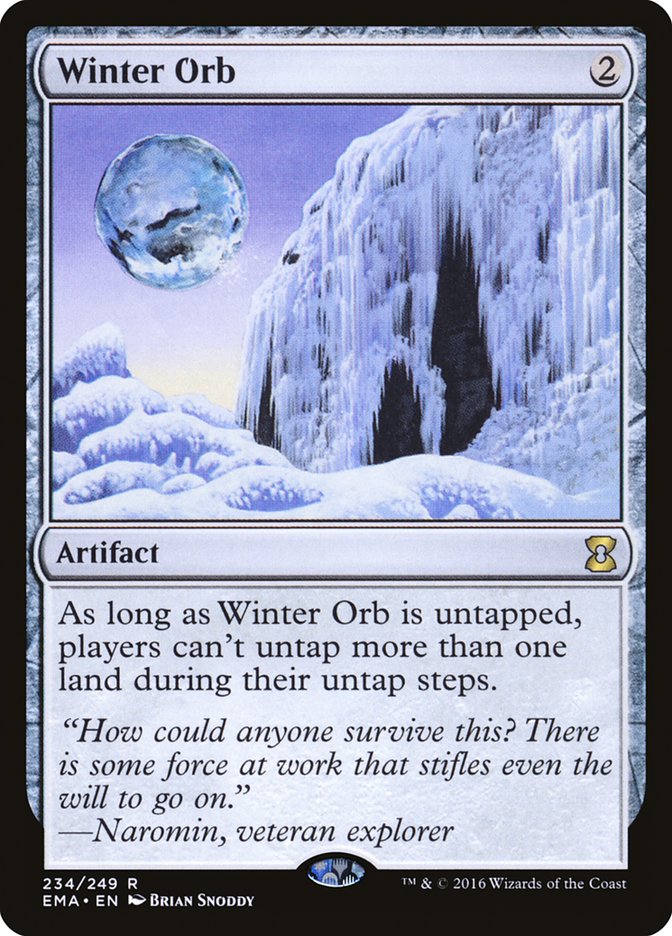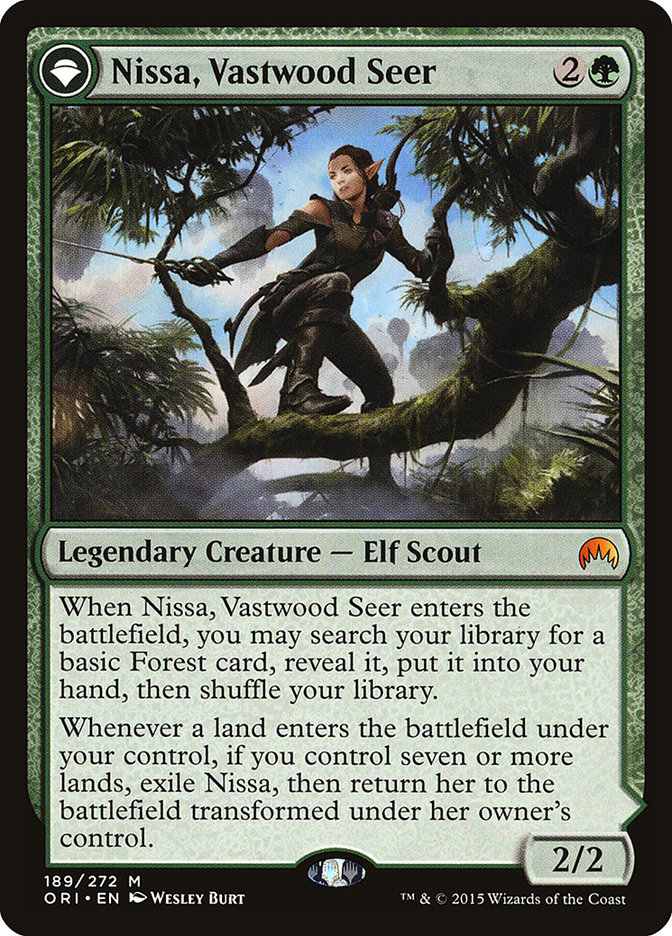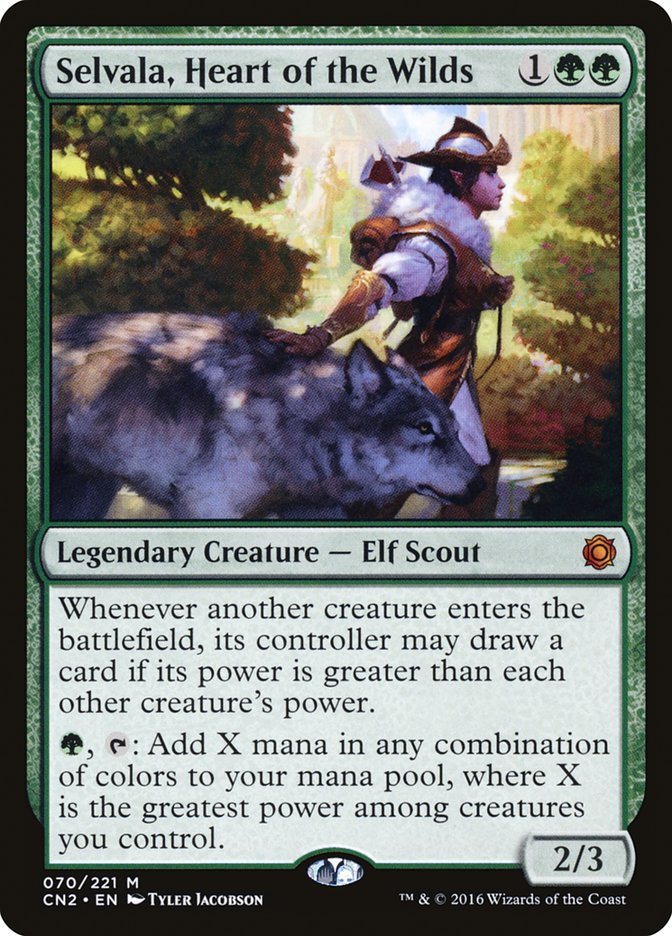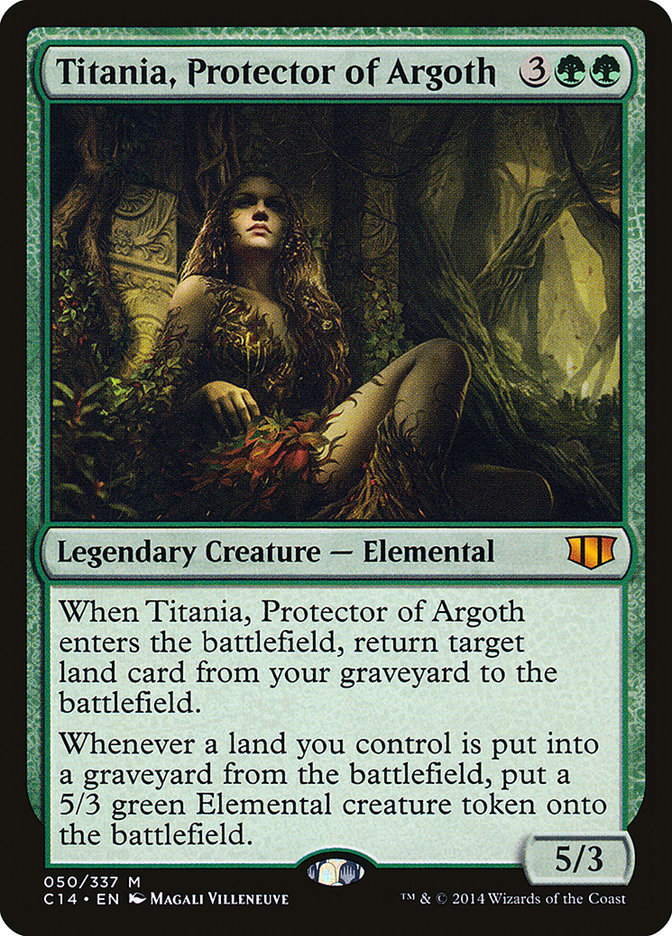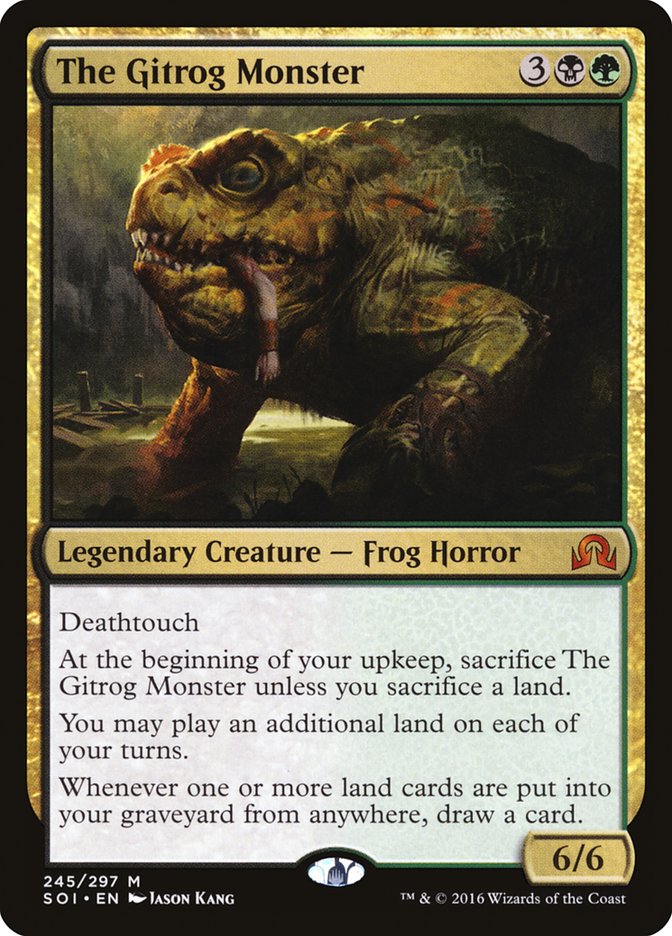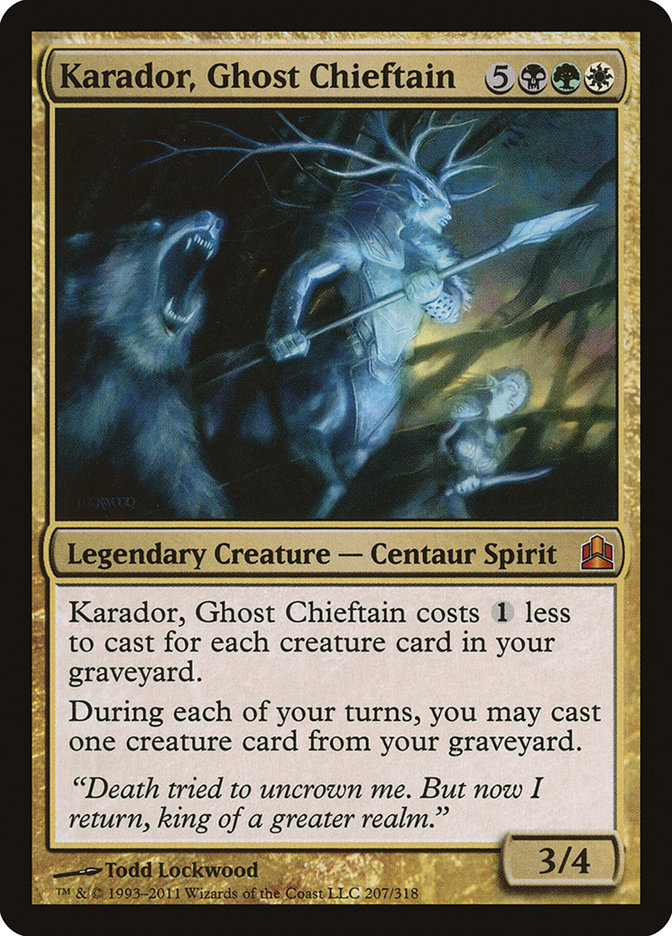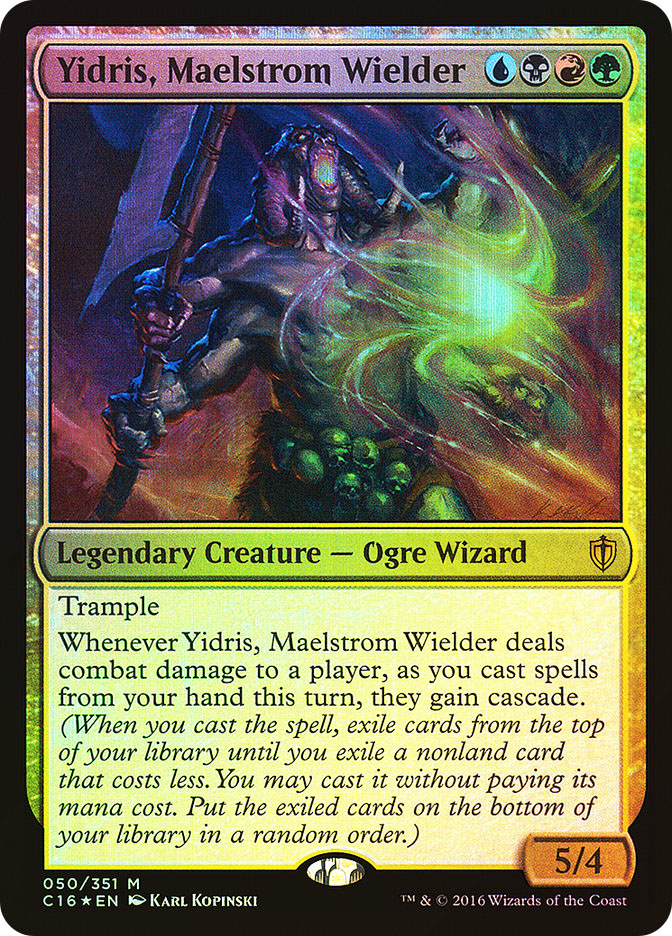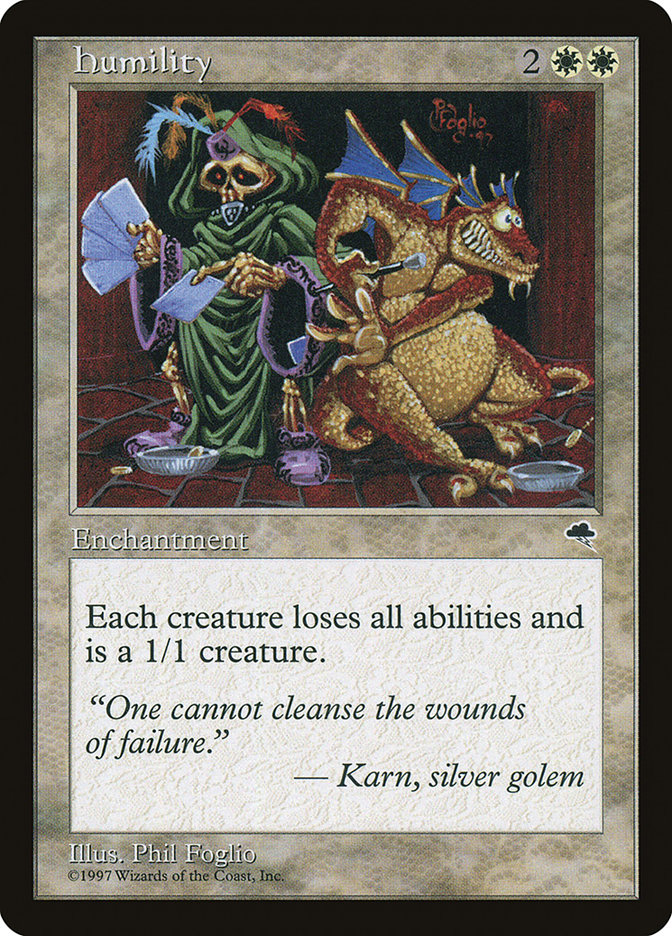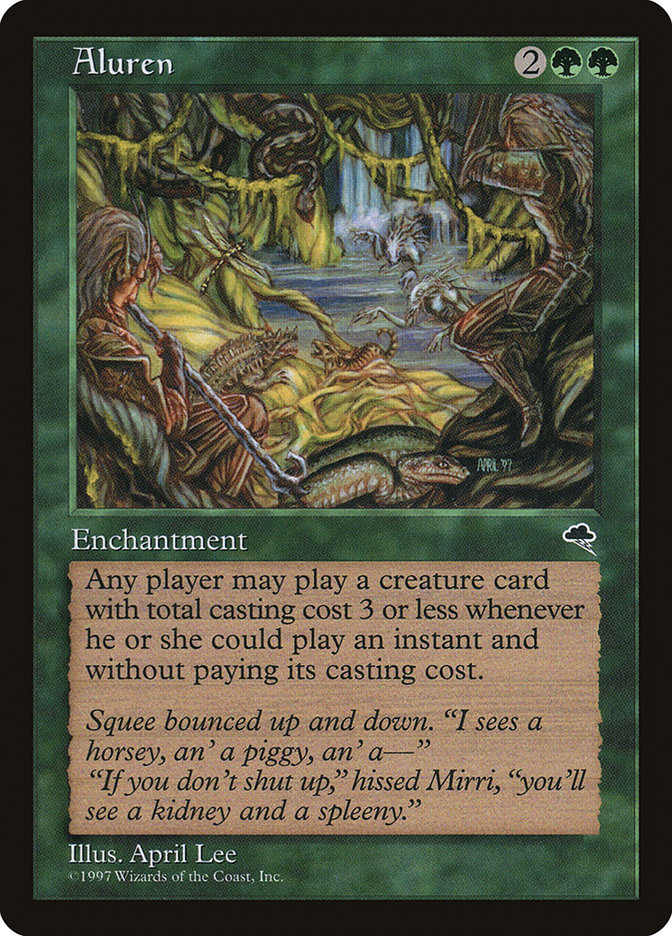[Some of these lists obviously pre-date the Strip Mine ban. Outlawing cards at random times continues to be a boon for Magic content producers the world over.–Ed.]
The headline said it all:
MTGO 1v1 COMMANDER STARTS MAY 10!
Actual. Wizards. Support.
Game. Set. Match.
Finding Our Footing
1v1 Commander is not “Commander.”
Repeat after me.
1v1 Commander is not “Commander.”
Playing your normal Commander deck will incinerate all of your tickets. Yes, even the good ones. Killing one opponent is way different from killing four. Playing against one player drawing one card and untapping one set of lands per turn is way different from playing against three players drawing a card and untapping a set of lands. Magic is a resource game and redefining the resource system with multiple players changes everything.
That said, players still start at 30 life. Can you imagine trying to play a normal aggro deck against that? You aren’t even going to come close! If you want to be the aggressor, you need to be hitting for large chunks of damage per turn, not chip-shotting card by card.
A second-level meta-realization: lifegain isn’t going to be that important. Normally lifegain is good when it directly converts to card advantage against an opponent trying to convert cards to damage. Since Lava Spike and red-style aggro is going to be bad, at best even your tacked-on lifegain is going to be a Fog. Not worth it.
Deriving further from this, Commander damage isn’t going to be that important. The difference between 21 damage and 30 isn’t a ton, and once you start looking further, the difference gets even smaller. It’s likely your opponent pays a couple of life to effects like fetchlands, Vampiric Tutor, and Force of Will. Once you start breaking the damage down into smaller quanta and accounting for the couple of self-damage, you realize you are only saving one attack on a Commander with four or more power. A three power Commander saves multiple hits, but that’s seven hits, which starts pushing the bounds of an individual threat being quick enough. Also, notice that the two solid, cheap-threat generals I listed were Geist of Saint Traft and Vial Smasher the Fierce, neither of which lethals through Commander combat damage.
Basically, this all points towards you killing your opponent via other means in many decks: combos, burying your opponent in card advantage, or creating virtual kills via soft locks or destroying their resources. That part is at least consistent with multiplayer Commander.
Manufactured Consistency
If we are distanced from multiplayer Commander, what competitive formats can we derive deckbuilding from?
1v1 Commander is not the first singleton format.
The obvious singleton format is Vintage. While in the current era of Mentors, Workshops, and Paradoxes this isn’t the case, there was a long period of time where games revolved around singletons. All of your best cards were one-ofs, and decks were built with that in mind.
There also used to be Magic Online-only formats we can draw from: 100-Card Singleton and Standard Singleton. While I’m not an expert on the former, I spent a lot of time with people who were the sharks of the latter.
Lesson 0: Consistency First
All of Constructed is about making a good deck, but also one that is consistently good. The build restriction on singleton formats always hits hard on that consistency axis.
The goal of every deck should be to assemble a cohesive gameplan across its cards. Never forget this, and don’t just start throwing cool things in because you have 100 slots to work with.
Lesson 1 (100-Card Singleton): Play every single tutor that works in your deck.
By the end of the 100-Card Singleton format, probably a half-dozen cards currently legal in this one were banned. Somehow I’m not sure Tainted Pact was, which is pretty easy to make an instant Demonic Tutor with snow basics, legendary lands, and more.
Play tutors, find your best cards, win with them. Every black commander is a big deal. Black and blue is even better!
Lesson 2 (Standard Singleton): There are enough answers and midrange threats to have a good one when you want.
The time I was tied into the Standard Singleton metagame was around Shards of Alara. From then through Zendikar, the best decks looked like “good stuff” piles. Part of that was the format, but there really were just enough random three- to six-cost things that were awesome. There are enough Signet surrogates, enough value planeswalkers, enough counterspells, and enough removal to make the proportions right.
Given the right colors, there’s probably even enough removal to have one that kills the weird stuff. In Sultai colors, you can Maelstrom Pulse, Imprisoned in the Moon, Abrupt Decay, Putrefy, or counter a random artifact like Mishra’s Helix. If you don’t draw Jace, the Mind Sculptor, you can jam bigger Jace number one (Jace, Unraveler of Secrets), other four-drop Jace (Jace, Architect of Thought), smaller Jace (Jace Beleren), or really any of dozens of solid planeswalkers for similar effect.
Basically, if you want to build a midrange-y control strategy, the tools exist to do it.
Lesson 3 (Vintage): In cases where one specific card resolves and dominates, the best answers are “same cards with more mana,” cheaper answers, “same cards with cheaper threats,” or hard hate.
Vintage can tell us how to plan our decks. You can either pull the classic big blue deck and play “protect the queen” on one big tutorable threat like Yawgmoth’s Will or Tinker, flood your deck with high-impact cards like Storm’s many Timetwister effects, or play cheap threats with the best answers and a splash of the best cards and exploit other decks having to commit to act. Regardless, the above points are the breakers to getting ahead in the inevitable threat-counter-recounter-style fights the format promotes.
It seems, early on in the format, that cheaper answers are winning out. Given that Baral, Chief of Compliance is the general to beat, that should be unsurprising. Games are forced down a “quick answer or die” road that repeats, and there are flurries of counterspells over game-ending Polymorphs to compete in.
There is a choke point on actual free countermagic. I actually expect one of the most tutored-for cards in the format to be Force of Will. As mentioned in my rundown of planeswalkers, there are a ton of mid-cost threats that are game-breaking to land. As I’ll get to a bit, there are also a lot of mid- to high-cost game-ending spells. Your opponent is going to have counters that cost mana, as are you, but because you are casting the three-or-higher-cost sorcery, you are naturally going to be behind in that fight. Unless you have Baral, Chief of Compliance, in which case you can just do everything you ever wanted. If you aren’t that lucky, then you need something else to break things up. Something like a free counterspell!
To be successful, the “more mana” strategy can’t just invest one card for one mana. If each of your Rampant Growths was a land, it’s the same final mana count. You need the card advantage inherent in bigger mana sources. If you want to be “counters and more mana,” you need cards like Worn Powerstone, Thran Dynamo, or Joraga Tree-Speaker. Not that Sakura-Tribe Elder isn’t playable, but it can’t be your only way up the curve.
Alternatively, you can just be dense on hard-to-answer threats. Considering your Commander can be one of those threats and is inherently resilient due to the rebuy factor, that is significantly easier than the actual spread of threats good against Counterspell implies.
Sadly for some people, fortunately for most people, it doesn’t appear the hard hate route is going to work out. If you just look at how the format is shaping up, there aren’t enough incentives in any direction to make the hate worth it. Trinisphere doesn’t work in a world where Mystic Confluence is a card people are normally casting, Leyline of the Void covers mere portions of every deck, and Stony Silence doesn’t hit a ton. Thalia, Guardian of Thraben and Thalia, Heretical Cathar do some work, but it’s easy to go over a Sphere of Resistance or two with all the non-artifact mana (aka lands) and there aren’t enough weird anti-nonbasic cards to make that strategy reliable.
There are a few cards that exist along those lines to unreliably end games. Hall of Gemstone is a hot one seeing a lot of play in the mono-green decks, though. Keep an eye out for it, as it’s both anti-multicolored hate and anti-counter hate.
Lesson 4 (Commander): You are starting every game with an eight-card hand. Every time your general dies, you draw a card.
If you look at all the core concepts I listed, you will notice most of them have to do with consistency. Welcome to Constructed Magic, where drawing a hand with a hodgepodge of incoherent pieces is a loss.
The single most consistent aspect of 1v1 Commander is your Commander. Every game you start with a bonus card that often draws you extra cards. The “extra cards” are because every time your Commander dies, you get it back in the Command zone, and the “often” is because basically every playable Commander is going to win the game if unanswered.
There are four classes of good Commanders: cheap, consistent value that boosts towards an end-game, efficient hard-hitting threats, combo enablers, and high-cost end-games. It turns out Baral is the deck to beat because he is both a cheap boost and a combo enabler.
The flip side of this is that your opponent’s Commander is consistent. Despite creatures sucking, good spot removal is really solid and always has a target.
Decks
Creatures (1)
Planeswalkers (1)
Lands (38)
Spells (59)
- 1 Stroke of Genius
- 1 Counterspell
- 1 Treachery
- 1 Force of Will
- 1 Dismiss
- 1 Rewind
- 1 Memory Lapse
- 1 Mana Leak
- 1 Impulse
- 1 Remove Soul
- 1 Force Spike
- 1 Serum Visions
- 1 Daze
- 1 Reweave
- 1 Merchant Scroll
- 1 Vedalken Shackles
- 1 Desertion
- 1 Bribery
- 1 Condescend
- 1 Complicate
- 1 False Summoning
- 1 Polymorph
- 1 Disrupt
- 1 Sapphire Medallion
- 1 Thwart
- 1 Misdirection
- 1 Snap
- 1 Miscalculation
- 1 Confound
- 1 Dominate
- 1 Repulse
- 1 Fact or Fiction
- 1 Deep Analysis
- 1 Mox Diamond
- 1 Chrome Mox
- 1 Pithing Needle
- 1 Remand
- 1 Repeal
- 1 Spell Snare
- 1 Ancestral Vision
- 1 Think Twice
- 1 Delay
- 1 Logic Knot
- 1 Cryptic Command
- 1 Ponder
- 1 Negate
- 1 Mindbreak Trap
- 1 Spell Pierce
- 1 Dispel
- 1 Jace's Ingenuity
- 1 Preordain
- 1 Mental Misstep
- 1 Gitaxian Probe
- 1 Flusterstorm
- 1 Visions of Beyond
- 1 Cyclonic Rift
- 1 Mystic Confluence
- 1 Pieces of the Puzzle
- 1 Pull from Tomorrow

Also more counterspells and this:
This is Public Enemy Number One. You cast Baral, Chief of Compliance on turn 2; if it lives, you fire a stream of looting counters, reduced-cost card draw, and other nonsense until you find a Polymorph. With Baral in your command zone, the only possible hit is the best one: Emrakul, the Aeons Torn. Game over, thanks for playing, etc.
Even if Baral dies too many times to be efficient, you have combo redundancy in your many creature-lands. Inkmoth Nexus is the only one close to capable of dealing lethal, and that’s for loose definitions of “close.” Aside from Emrakul, your routes to victory are stealing their end-game with Treachery or Vedalken Shackles or a classic control win via overwhelming card advantage.
If there is one weakness of the Baral decks, it is resolved threats. There’s a reason that they go all the way down to the Portal False Summoning to stop a creature. You have a couple of Control Magics, a couple of bounce spells, and that’s it. If you resolve something that is resilient against those, you are going to win with it. Cavern of Souls should probably be in a majority of decks in this format.
Creatures (7)
- 1 Vendilion Clique
- 1 Snapcaster Mage
- 1 Deathrite Shaman
- 1 Tasigur, the Golden Fang
- 1 Jace, Vryn's Prodigy
- 1 Emrakul, the Promised End
- 1 Leovold, Emissary of Trest
Planeswalkers (4)
Lands (39)
- 1 Strip Mine
- 1 Forest
- 1 Wooded Foothills
- 1 Wasteland
- 1 Reflecting Pool
- 1 City of Brass
- 1 Swamp
- 1 Mountain
- 1 Island
- 1 Volcanic Island
- 1 Underground Sea
- 1 Tropical Island
- 1 Taiga
- 1 Bayou
- 1 Badlands
- 1 Windswept Heath
- 1 Polluted Delta
- 1 Flooded Strand
- 1 Bloodstained Mire
- 1 Overgrown Tomb
- 1 Watery Grave
- 1 Steam Vents
- 1 Stomping Ground
- 1 Blood Crypt
- 1 Breeding Pool
- 1 Graven Cairns
- 1 Sunken Ruins
- 1 Cascade Bluffs
- 1 Flooded Grove
- 1 Drowned Catacomb
- 1 Arid Mesa
- 1 Marsh Flats
- 1 Misty Rainforest
- 1 Scalding Tarn
- 1 Verdant Catacombs
- 1 Creeping Tar Pit
- 1 Command Tower
- 1 Hinterland Harbor
- 1 Sulfur Falls
Spells (48)
- 1 Brainstorm
- 1 Lightning Bolt
- 1 Counterspell
- 1 Treachery
- 1 Vampiric Tutor
- 1 Duress
- 1 Force of Will
- 1 Diabolic Edict
- 1 Sylvan Library
- 1 Demonic Tutor
- 1 Red Elemental Blast
- 1 Memory Lapse
- 1 Mana Leak
- 1 Serum Visions
- 1 Intuition
- 1 Terminate
- 1 Crucible of Worlds
- 1 Pyroblast
- 1 Snuff Out
- 1 Misdirection
- 1 Miscalculation
- 1 Carpet of Flowers
- 1 Evasive Action
- 1 Fact or Fiction
- 1 Tainted Pact
- 1 Mental Note
- 1 Mox Diamond
- 1 Chrome Mox
- 1 Life from the Loam
- 1 Remand
- 1 Spell Snare
- 1 Ancestral Vision
- 1 Ponder
- 1 Thoughtseize
- 1 Inquisition of Kozilek
- 1 Preordain
- 1 Nihil Spellbomb
- 1 Gitaxian Probe
- 1 Dismember
- 1 Flusterstorm
- 1 Thought Scour
- 1 Abrupt Decay
- 1 Toxic Deluge
- 1 Kolaghan's Command
- 1 Painful Truths
- 1 Mystic Confluence
- 1 Glimmer of Genius
- 1 Fatal Push

The next big category consists of decks trying to exploit Baral decks as the tempo to their combo-control. Your Commander in this case is just some generic threat to go with good answers. Almost all of these decks are U/B/X, as the black answers are generally the best, but there is room for U/W or U/W/R to exist, as the Demonic Tutors are merely fine here.
Worth noting: Leovold, Emissary of Trest; Tasigur, the Golden Fang; and Jace, Vryn’s Prodigy all show up in this deck. Which one you actually choose as your Commander is really up for grabs, especially among the Sultai configurations. One of them obviously has to be best, but it’s really too early in testing to tell. The bonus red in this list is actually more relevant than it looks, but I think Vial Smasher the Fierce lost enough power with the delve spell ban that just having Leovold or Tasigur is a big upgrade.
I do want to give a quick shout-out to Surrak Dragonclaw. There’s a big downgrade in spell quality to go Temur over Sultai, but wow is that a spiteful Commander against the counter-heavy metagame.
Creatures (4)
Planeswalkers (3)
Lands (33)
- 1 Wooded Foothills
- 1 Wasteland
- 1 City of Brass
- 2 Island
- 1 Volcanic Island
- 1 Underground Sea
- 1 Tundra
- 1 Scrubland
- 1 Plateau
- 1 Ancient Tomb
- 1 Badlands
- 1 Windswept Heath
- 1 Polluted Delta
- 1 Flooded Strand
- 1 Bloodstained Mire
- 2 Snow-Covered Island
- 1 Dust Bowl
- 1 Dimir Aqueduct
- 1 Watery Grave
- 1 Izzet Boilerworks
- 1 Steam Vents
- 1 Azorius Chancery
- 1 Hallowed Fountain
- 1 Flagstones of Trokair
- 1 Arid Mesa
- 1 Marsh Flats
- 1 Misty Rainforest
- 1 Scalding Tarn
- 1 Verdant Catacombs
- 1 Command Tower
- 1 Mana Confluence
Spells (59)
- 1 Brainstorm
- 1 Armageddon
- 1 Ravages of War
- 1 Counterspell
- 1 Treachery
- 1 Vampiric Tutor
- 1 Mystical Tutor
- 1 Enlightened Tutor
- 1 Grim Monolith
- 1 Yawgmoth's Will
- 1 Force of Will
- 1 Scroll Rack
- 1 Diabolic Edict
- 1 Swords to Plowshares
- 1 Winter Orb
- 1 Land Tax
- 1 Demonic Tutor
- 1 Imperial Seal
- 1 Fellwar Stone
- 1 Memory Lapse
- 1 Mana Leak
- 1 Impulse
- 1 Forbid
- 1 Gush
- 1 Daze
- 1 Merchant Scroll
- 1 Night's Whisper
- 1 Crucible of Worlds
- 1 Talisman of Progress
- 1 Talisman of Dominance
- 1 Mind Stone
- 1 Disrupt
- 1 Tithe
- 1 Vindicate
- 1 Evasive Action
- 1 Fact or Fiction
- 1 Mox Diamond
- 1 Jeweled Amulet
- 1 Chrome Mox
- 1 Dimir Signet
- 1 Muddle the Mixture
- 1 Remand
- 1 Izzet Signet
- 1 Azorius Signet
- 1 Spell Snare
- 1 Ancestral Vision
- 1 Mystical Teachings
- 1 Cryptic Command
- 1 Ponder
- 1 Negate
- 1 Spell Pierce
- 1 Deprive
- 1 Preordain
- 1 Mox Opal
- 1 Stoic Rebuttal
- 1 Mental Misstep
- 1 Supreme Verdict
- 1 Toxic Deluge
- 1 Stubborn Denial

The next level up people have attempted is bigger blue decks. There’s a lot of stuff to figure out here, but we are moving in the right direction. I think Breya, Etherium Sculptor is a pretty clear winner on power level, but Narset, Enlightened Master has a more interesting angle of approach.
Breya is pretty straightforward good stuff and mana, with a commander that Shriekmaws their commander and lets you cash in extra mana rocks for the same thing later. Narset, Enlightened Master has shaped up as Time Walk combo deck, where you stick Narset and start chaining off extra turns and planeswalkers for lethal.
I think the Breya lists should be learning from this “one big turn” approach. I specifically like that this list is moving towards maximizing Armageddon effects, which are the easy game-breakers when you have artifact mana and relatively few other people do. I do think that the deck is a little short on sweepers for opposing mana-creature decks to enable these Armageddons to win games, though it is possible the plan in those matchups should be different.
Creatures (28)
- 1 Sakura-Tribe Elder
- 1 Llanowar Elves
- 1 Priest of Titania
- 1 Birds of Paradise
- 1 Wood Elves
- 1 Fyndhorn Elves
- 1 Eternal Witness
- 1 Duplicant
- 1 Fierce Empath
- 1 Boreal Druid
- 1 Acidic Slime
- 1 Lotus Cobra
- 1 Arbor Elf
- 1 Emrakul, the Aeons Torn
- 1 Joraga Treespeaker
- 1 Obstinate Baloth
- 1 Primeval Titan
- 1 Scavenging Ooze
- 1 Thragtusk
- 1 Elvish Mystic
- 1 Titania, Protector of Argoth
- 1 Woodland Bellower
- 1 Oblivion Sower
- 1 Ulamog, the Ceaseless Hunger
- 1 World Breaker
- 1 Thought-Knot Seer
- 1 Tireless Tracker
- 1 Emrakul, the Promised End
Planeswalkers (3)
Lands (37)
- 16 Forest
- 1 Wooded Foothills
- 1 Ancient Tomb
- 1 Windswept Heath
- 1 Temple of the False God
- 5 Snow-Covered Forest
- 1 Dust Bowl
- 1 Mouth of Ronom
- 1 Urborg, Tomb of Yawgmoth
- 1 Dryad Arbor
- 1 Misty Rainforest
- 1 Verdant Catacombs
- 1 Eye of Ugin
- 1 Tectonic Edge
- 1 Eldrazi Temple
- 1 Cavern of Souls
- 1 Nykthos, Shrine to Nyx
- 1 Wastes
Spells (31)
- 1 Plow Under
- 1 Sylvan Library
- 1 Wild Growth
- 1 Rampant Growth
- 1 Kodama's Reach
- 1 Crucible of Worlds
- 1 Reap and Sow
- 1 Sylvan Scrying
- 1 Nature's Lore
- 1 Three Visits
- 1 Hall of Gemstone
- 1 Crop Rotation
- 1 Carpet of Flowers
- 1 Skyshroud Claim
- 1 Utopia Sprawl
- 1 Into the North
- 1 Mwonvuli Acid-Moss
- 1 Search for Tomorrow
- 1 Harmonize
- 1 Lignify
- 1 Primal Command
- 1 Expedition Map
- 1 Explore
- 1 Nature's Claim
- 1 All Is Dust
- 1 Cultivate
- 1 Green Sun's Zenith
- 1 Beast Within
- 1 Nissa's Pilgrimage
- 1 Nissa's Renewal
- 1 Traverse the Ulvenwald

The next category is ramp. The idea is super-straightforward: make a bunch of mana and cast a big thing. The first interesting part is leaning on a land toolbox that leads to regular Cavern of Souls, to Eldrazi endgames off Eye of Ugin, to soft locks with Dust Bowl, and to cashing in your Crop Rotations and Sylvan Scrying as true ramp via Ancient Tomb. The other interesting part is Commander selection to minimize the impact of Vedalken Shackles and Treachery. Control Magicing Nissa, Vastwood Seer is a truly horrendous idea; Titania, Protector of Argoth still puts you up a land and a 5/3; and Selvala, Heart of the Wilds still draws you cards and can’t be activated by a mono-blue deck for mana.
Honestly, still I have no idea how these decks compete with Baral, Chief of Compliance, but they probably do a good job against the fair decks. The big issue is that you just can’t kill a creature. Your Baral opponents are just going to have uninterrupted access to everything they want to do, which seems like a total disaster.
The answer Jeff Hoogland came to is splashing a second color. The Gitrog Monster is the best rampy G/B/X Commander, even if it is a bit of a liability versus Treachery. I can’t help but think the Eldrazi / Eye of Ugin plan belongs here in some small amount, but this is a good start towards a more resilient ramp deck.
Creatures (9)
- 1 Azusa, Lost but Seeking
- 1 Eternal Witness
- 1 Lotus Cobra
- 1 Oracle of Mul Daya
- 1 Primeval Titan
- 1 Deathrite Shaman
- 1 Courser of Kruphix
- 1 Titania, Protector of Argoth
- 1 Tireless Tracker
Planeswalkers (2)
Lands (48)
- 1 Strip Mine
- 8 Forest
- 1 Wooded Foothills
- 1 Wasteland
- 6 Swamp
- 1 Bayou
- 1 Ancient Tomb
- 1 Windswept Heath
- 1 Polluted Delta
- 1 Bloodstained Mire
- 1 Crystal Vein
- 1 Maze of Ith
- 1 Tranquil Thicket
- 1 Barren Moor
- 1 Peat Bog
- 1 Hickory Woodlot
- 1 Dust Bowl
- 1 Petrified Field
- 1 Cabal Pit
- 1 Overgrown Tomb
- 1 Dark Depths
- 1 Urborg, Tomb of Yawgmoth
- 1 Marsh Flats
- 1 Misty Rainforest
- 1 Verdant Catacombs
- 1 Bojuka Bog
- 1 Tectonic Edge
- 1 Command Tower
- 1 Buried Ruin
- 1 Woodland Cemetery
- 1 Cavern of Souls
- 1 Thespian's Stage
- 1 Temple of Malady
- 1 Blighted Fen
- 1 Blooming Marsh
- 1 Ash Barrens
Spells (40)
- 1 Hymn to Tourach
- 1 Plow Under
- 1 Vampiric Tutor
- 1 Exploration
- 1 Duress
- 1 Sylvan Library
- 1 Regrowth
- 1 Demonic Tutor
- 1 Dark Ritual
- 1 Choke
- 1 Summer Bloom
- 1 Grim Tutor
- 1 Burgeoning
- 1 Night's Whisper
- 1 Crucible of Worlds
- 1 Sylvan Scrying
- 1 Nature's Lore
- 1 Three Visits
- 1 Snuff Out
- 1 Crop Rotation
- 1 Carpet of Flowers
- 1 Mox Diamond
- 1 Chrome Mox
- 1 Farseek
- 1 Life from the Loam
- 1 Damnation
- 1 Primal Command
- 1 Thoughtseize
- 1 Raven's Crime
- 1 Maelstrom Pulse
- 1 Expedition Map
- 1 Explore
- 1 Inquisition of Kozilek
- 1 Realms Uncharted
- 1 Green Sun's Zenith
- 1 Go for the Throat
- 1 Abrupt Decay
- 1 Hero's Downfall
- 1 Toxic Deluge
- 1 Dark Petition

Creatures (51)
- 1 Sakura-Tribe Elder
- 1 Llanowar Elves
- 1 Solemn Simulacrum
- 1 Priest of Titania
- 1 Wall of Blossoms
- 1 Birds of Paradise
- 1 Kiki-Jiki, Mirror Breaker
- 1 Man-o'-War
- 1 Wirewood Symbiote
- 1 Wood Elves
- 1 Fyndhorn Elves
- 1 Cloud of Faeries
- 1 Great Whale
- 1 Gilded Drake
- 1 Fierce Empath
- 1 Imperial Recruiter
- 1 Wall of Roots
- 1 Palinchron
- 1 Peregrine Drake
- 1 Wild Cantor
- 1 Coiling Oracle
- 1 Dream Stalker
- 1 Venser, Shaper Savant
- 1 Mulldrifter
- 1 Pestermite
- 1 Bloom Tender
- 1 Regal Force
- 1 Elvish Visionary
- 1 Bloodbraid Elf
- 1 Lotus Cobra
- 1 Arbor Elf
- 1 Emrakul, the Aeons Torn
- 1 Kozilek, Butcher of Truth
- 1 Sea Gate Oracle
- 1 Fauna Shaman
- 1 Primeval Titan
- 1 Sylvan Ranger
- 1 Deceiver Exarch
- 1 Phantasmal Image
- 1 Zealous Conscripts
- 1 Soul of the Harvest
- 1 Maelstrom Wanderer
- 1 Gatecreeper Vine
- 1 Elvish Mystic
- 1 Purphoros, God of the Forge
- 1 Reclamation Sage
- 1 Rattleclaw Mystic
- 1 Den Protector
- 1 Ancestral Statue
- 1 Woodland Bellower
- 1 Beastcaller Savant
Lands (36)
- 4 Forest
- 1 Wooded Foothills
- 1 Karplusan Forest
- 1 City of Brass
- 1 Mountain
- 3 Island
- 1 Volcanic Island
- 1 Tropical Island
- 1 Taiga
- 1 Windswept Heath
- 1 Polluted Delta
- 1 Flooded Strand
- 1 Bloodstained Mire
- 1 Yavimaya Coast
- 1 Steam Vents
- 1 Stomping Ground
- 1 Breeding Pool
- 1 Fire-Lit Thicket
- 1 Rootbound Crag
- 1 Arid Mesa
- 1 Misty Rainforest
- 1 Scalding Tarn
- 1 Verdant Catacombs
- 1 Copperline Gorge
- 1 Command Tower
- 1 Hinterland Harbor
- 1 Sulfur Falls
- 1 Kessig Wolf Run
- 1 Cavern of Souls
- 1 Mana Confluence
- 1 Botanical Sanctum
Spells (12)

Combo in general feels a bit underrepresented right now in 1v1 Commander, but some of that might be the newness of the format. The combo decks that are currently popping up the most are creature-based combo, similar to 100-card versions of Modern Pod/Chord/Company decks. Just like those decks, there’s a split between Abzan sacrifice shenanigans and Kiki-Jiki, Mirror Breaker arbitrary largeness.
I’ll be the first to admit I don’t quite see every moving piece here without games under my belt, but it feels weird that there isn’t an immediate lethal Pod chain here, as you are missing the Restoration Angel-style four-drop. Animar, Soul of Elements is a pretty key combo piece for the Glimpse of Nature / Cloudstone Curio / Eldrazi kills, so adding white is a real cost, but there has to be something that does the trick. What isn’t weird is maindeck Carpet of Flowers, which honestly feels like it should be a staple deckbuilding choice of the format.
Again, we do have an archetype here that is soft to an early Baral, with the hope that you can just overload their countermagic and combo with your nonsense. My gut say that isn’t really likely, but maybe things are slanting hard enough away from the “best deck” that you can throw scissors and not just run into rock.
Lurking beneath all this is some pretty absurd true combo potential. Looking through old singleton format banned lists lead me to realize a few non-tutor things weren’t banned that probably could be. Dream Halls is a pretty crazy engine, Yawgmoth’s Will is still just Yawgmoth’s Will, and tons of draw-sevens like Timetwister, Windfall, and Time Spiral are all legal. There is something here to work with in a U/B/X shell, and you can beat countermagic with these decks.
I’m still unsure what the best Commander is, but the two that popped out are Yidris, Maelstrom Wanderer and Sen Triplets. Yidris makes it super-easy to combo out after one attack, while Sen Triplets is a Defense Grid-style effect. Honestly, though, something like Leovold, Emissary of Trest or Tasigur, the Golden Fang might just be best. Why not just play the best backup win condition possible? Note the brutal interaction between Leovold and Timetwister.
While there are several defined strategies at the top, it still feels like there is a lot of room for development. For example, if you know your opponent is going for a creature-based strategy every game, what happens if you focus on cards like Humility that just shut that right down? What weird other combos like Aluren exist to splice into decks?
There’s a real challenge to be had in 1v1 Commander, and honestly the approach is similar to how people approach traditional Commander. Don’t worry a ton about card-by-card tuning to start. Have a vision for your deck, know the field it need to play against, and see what exciting things pop out as you start to explore all the options the format has waiting.


